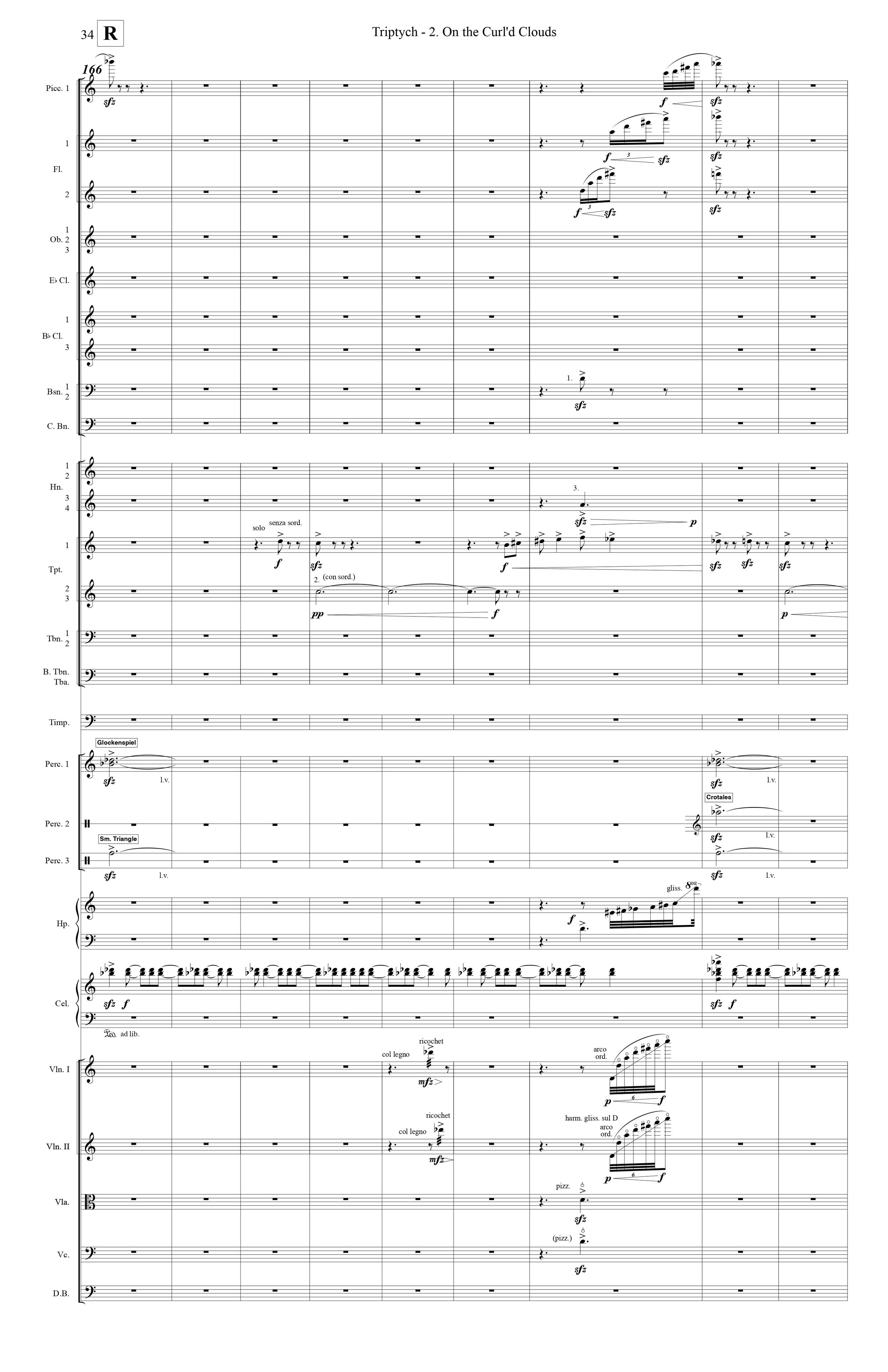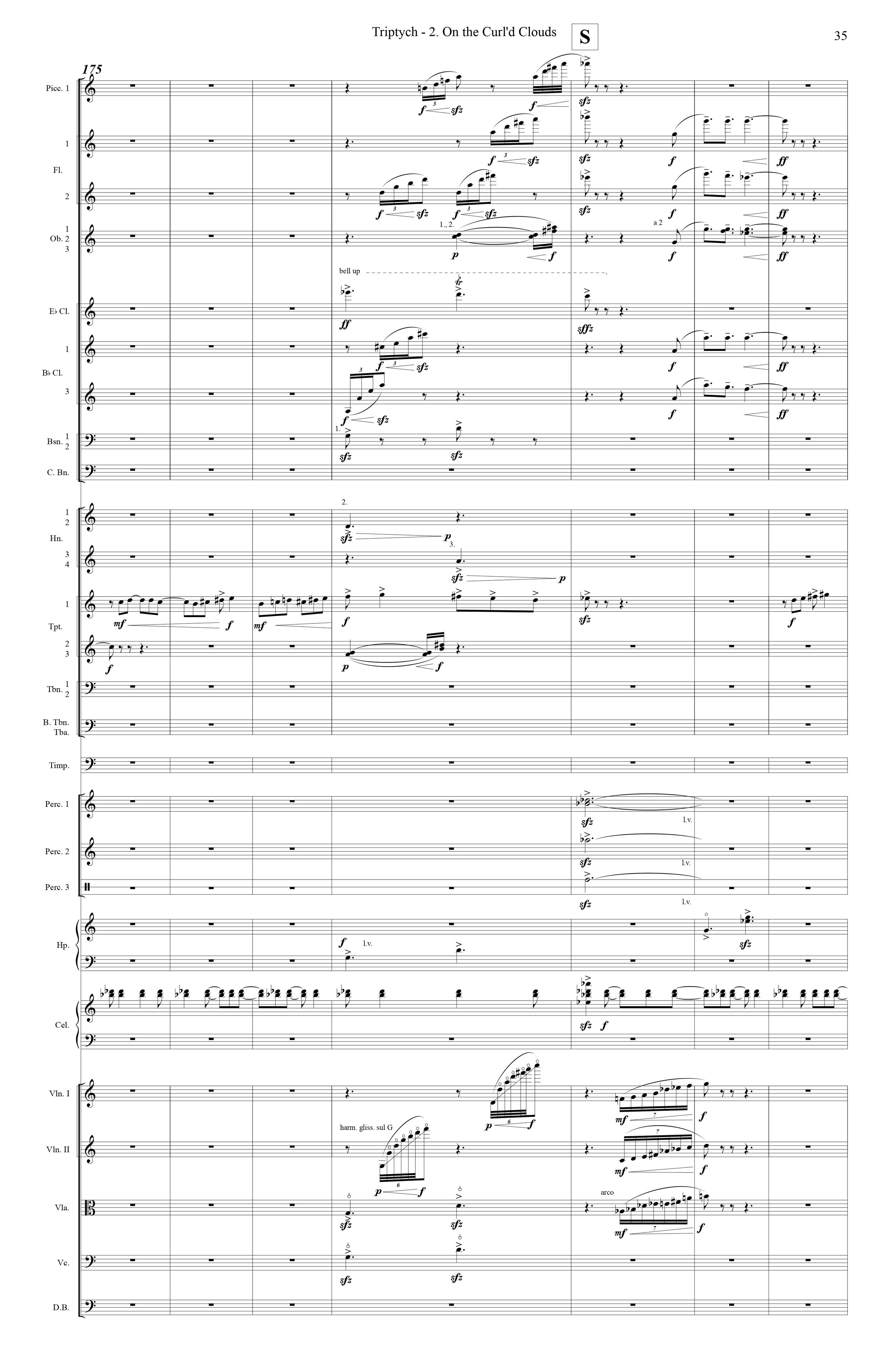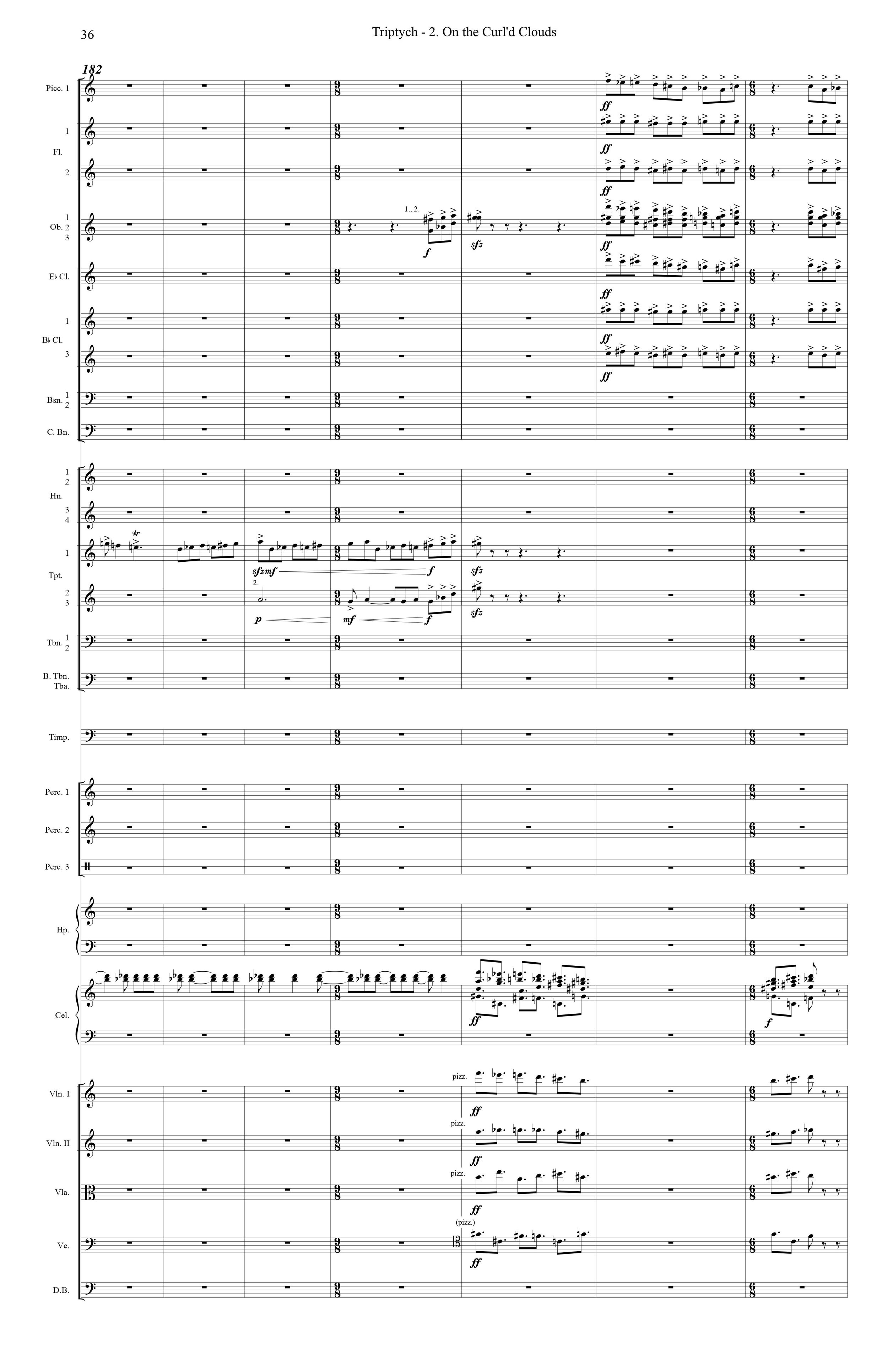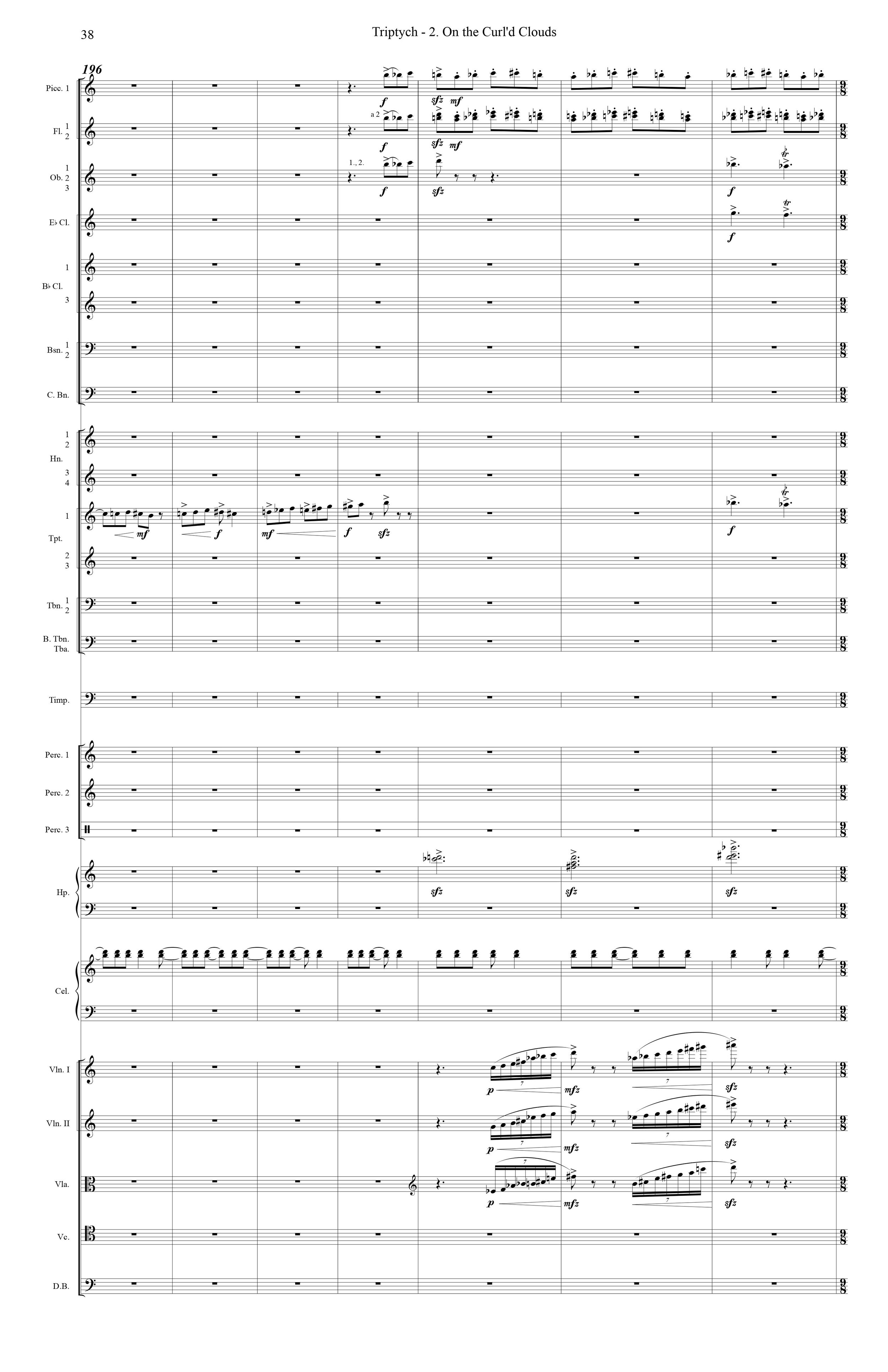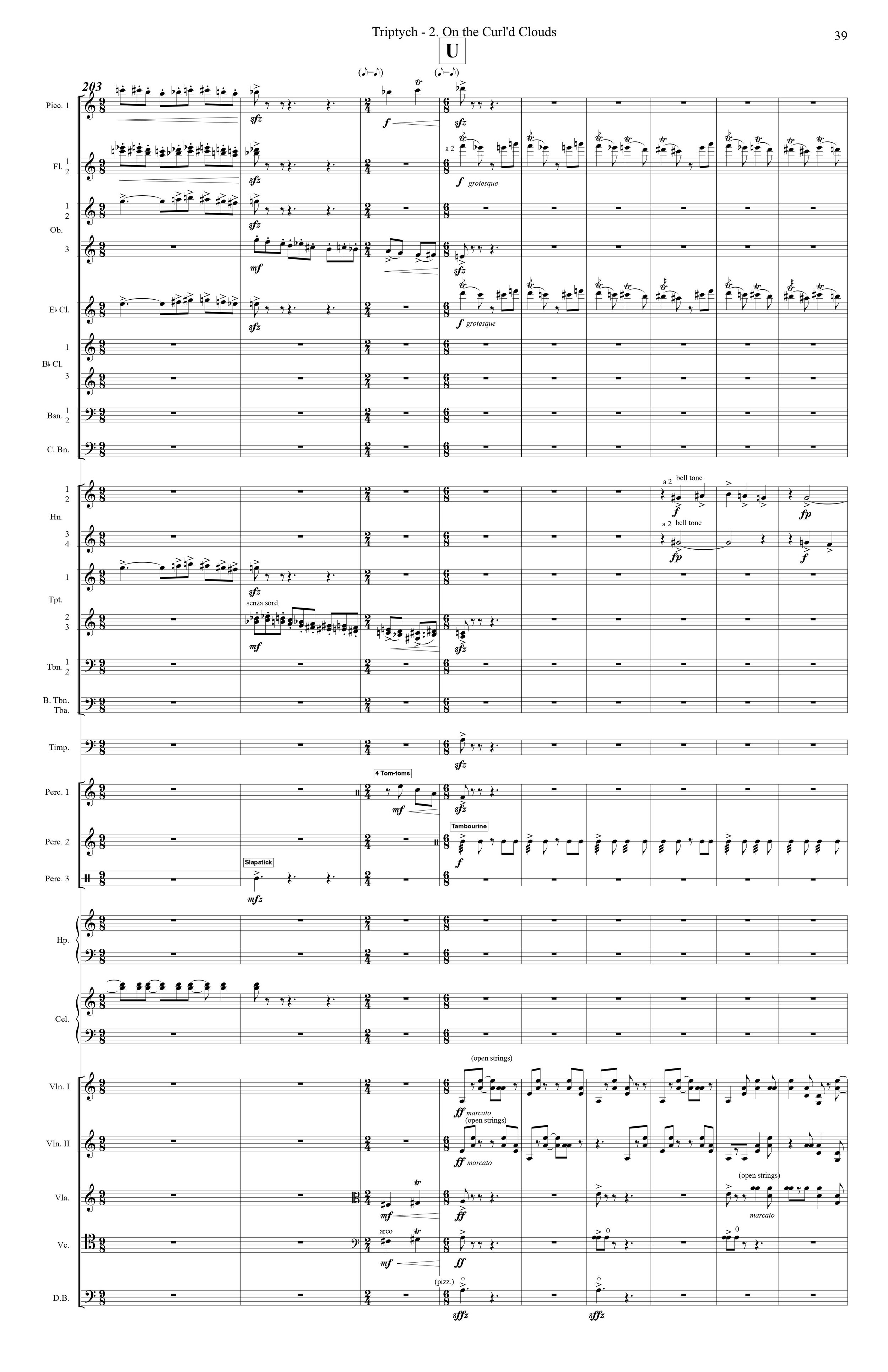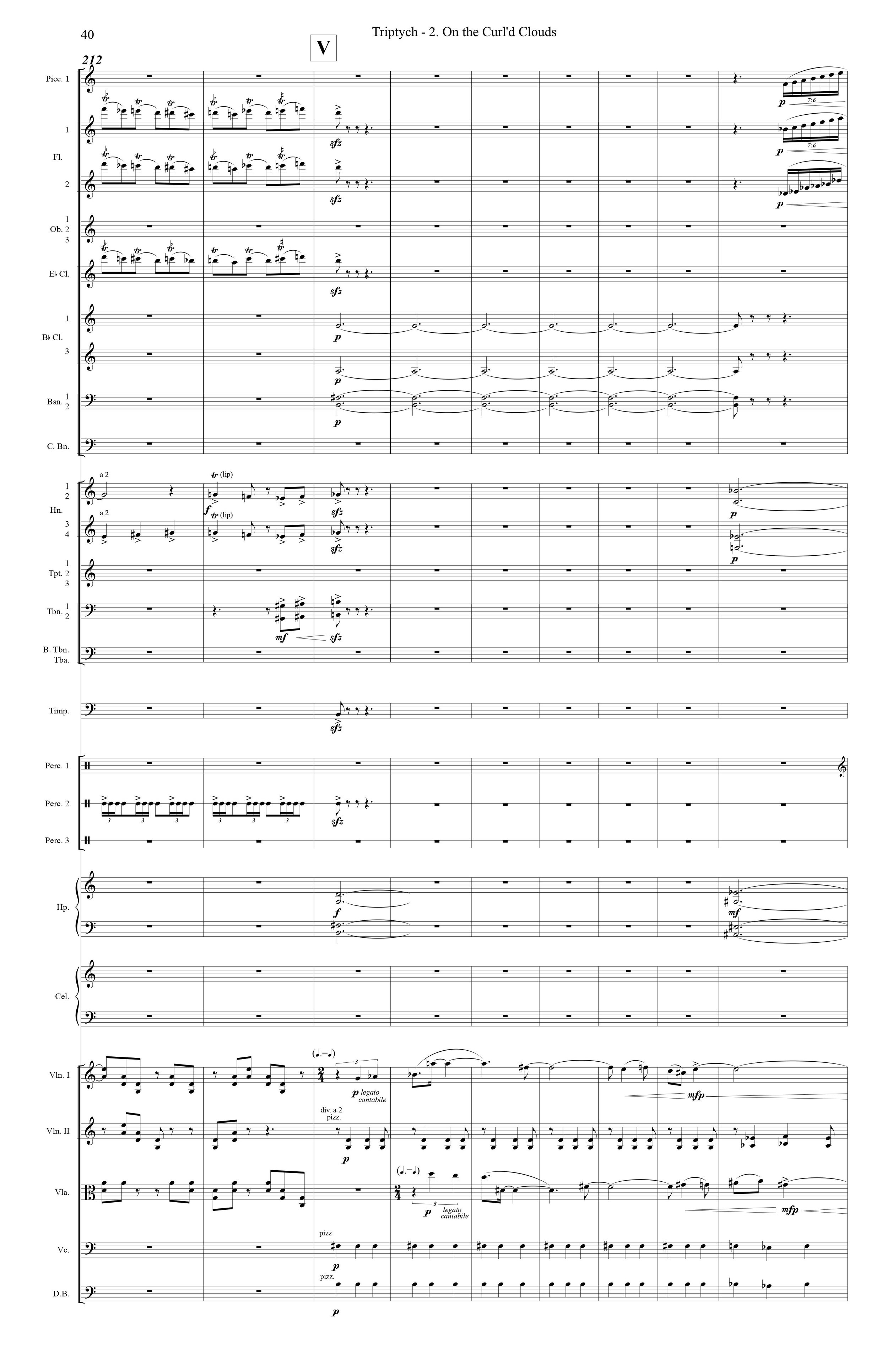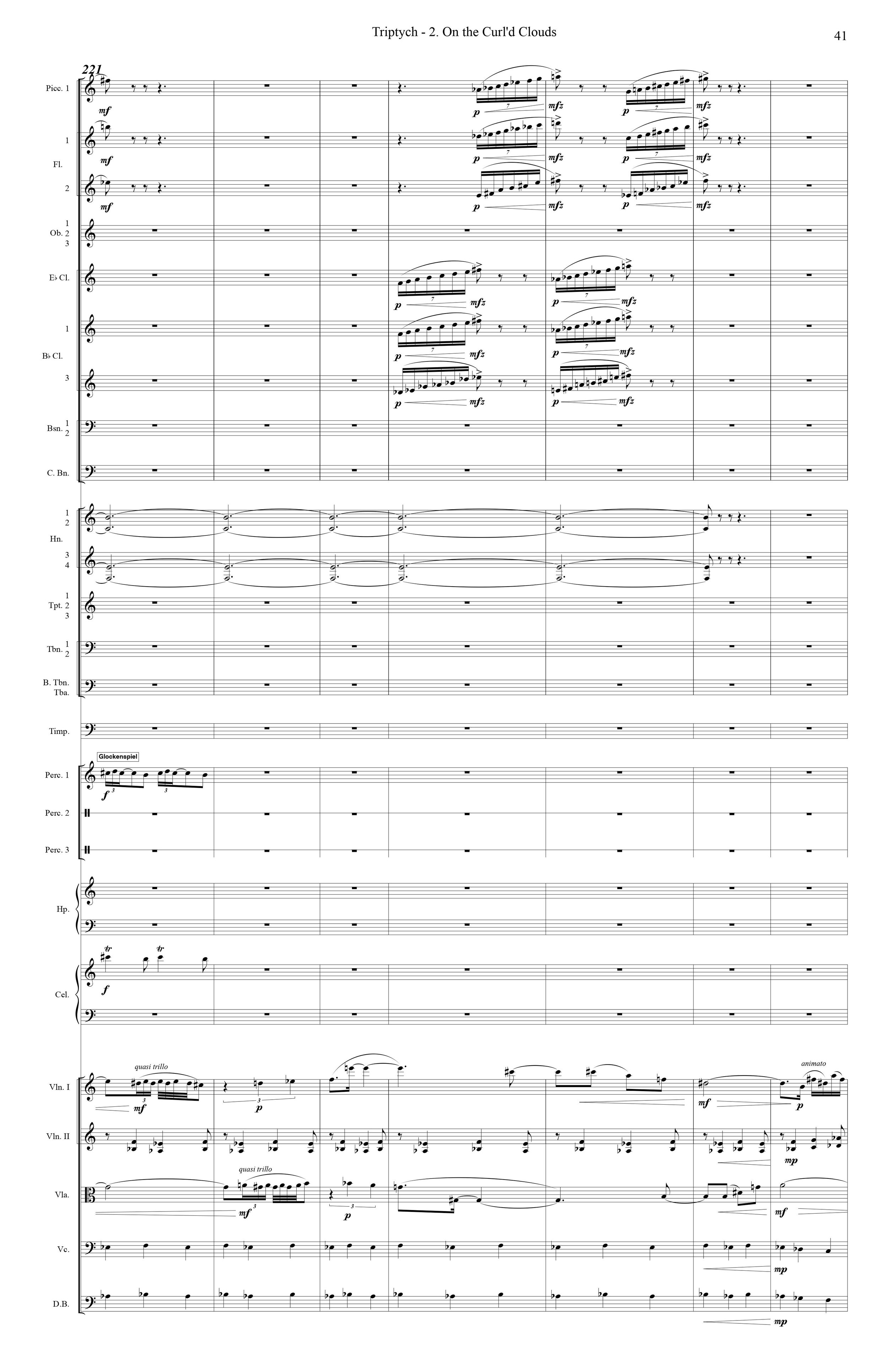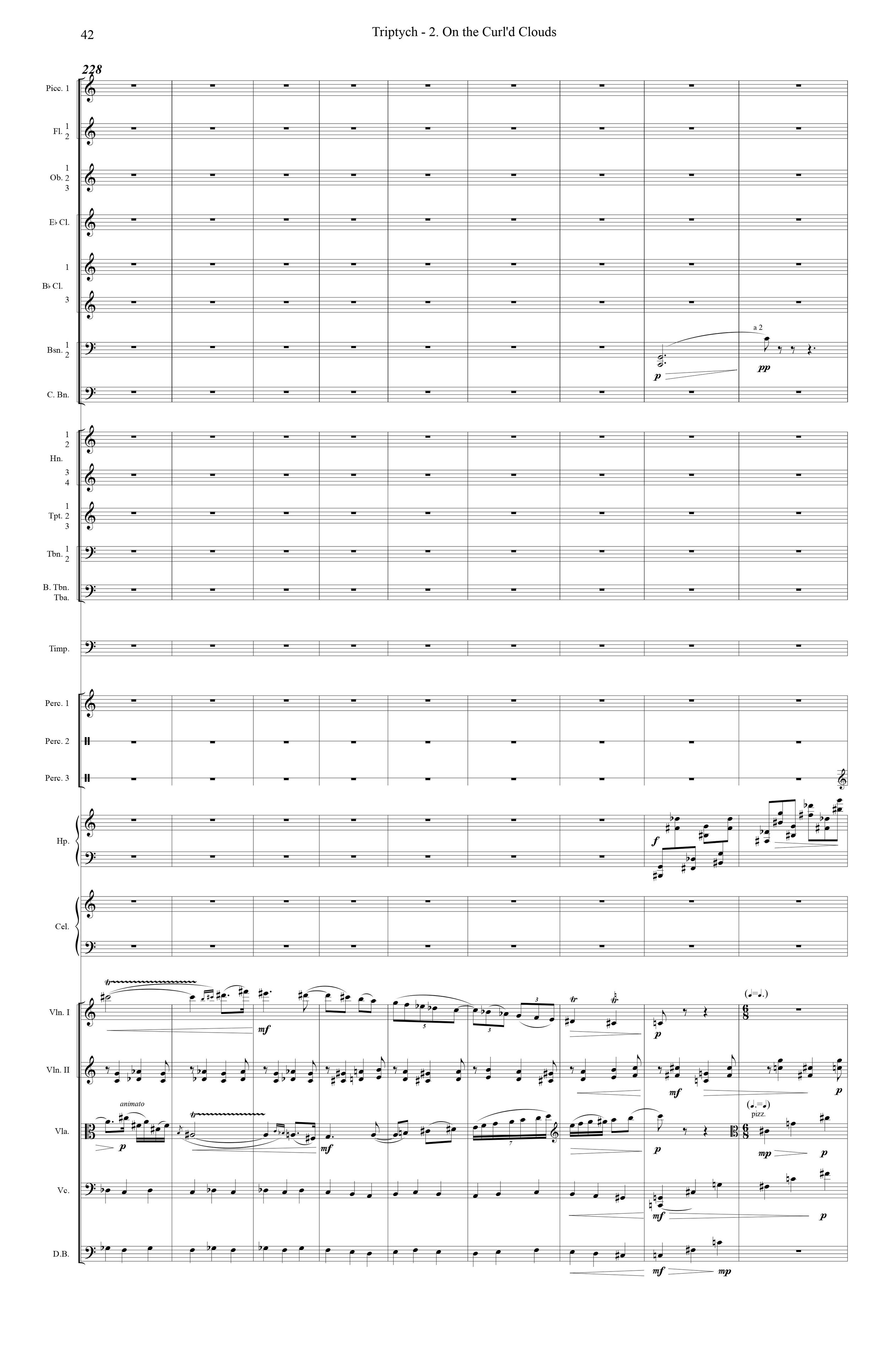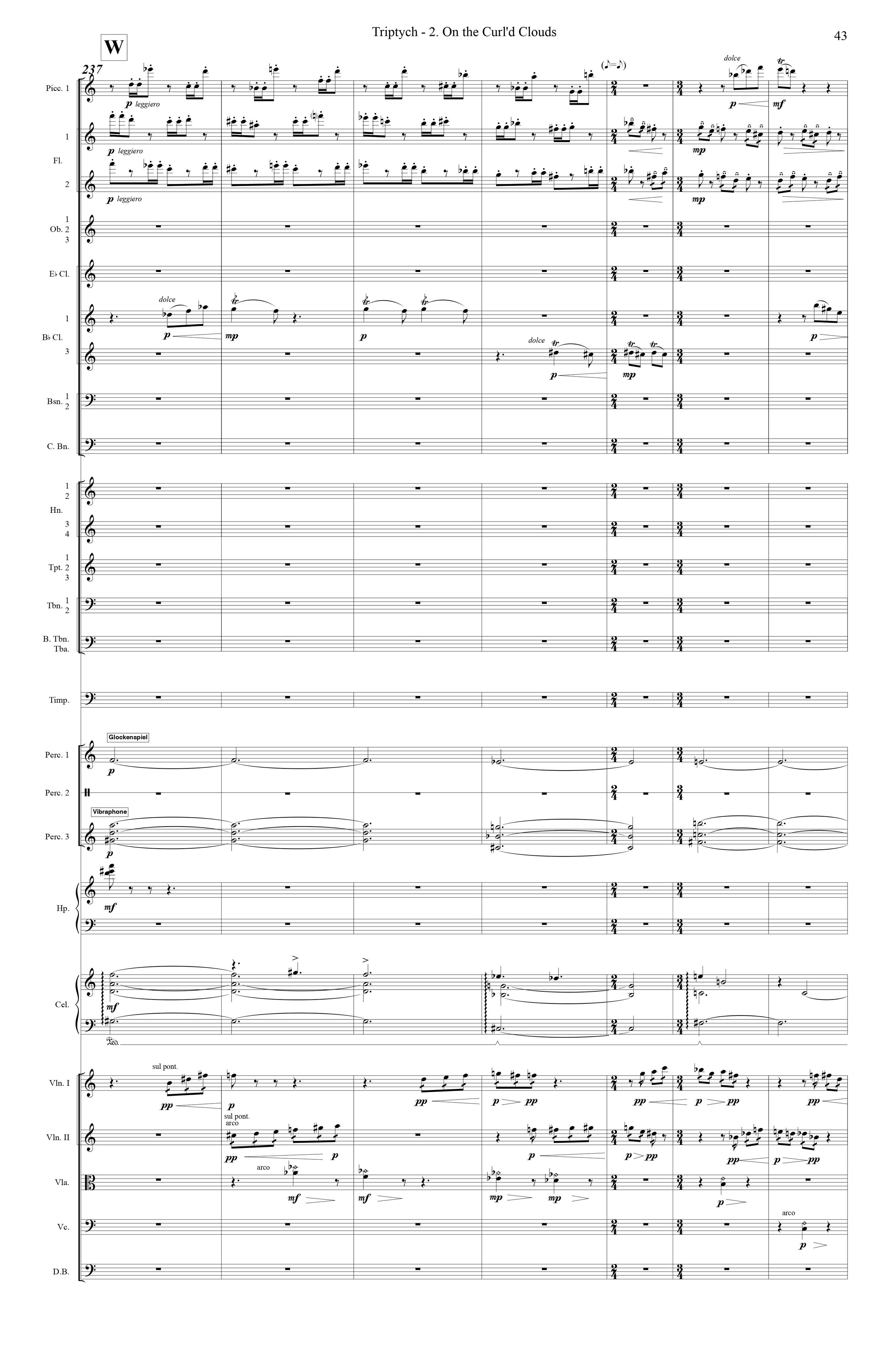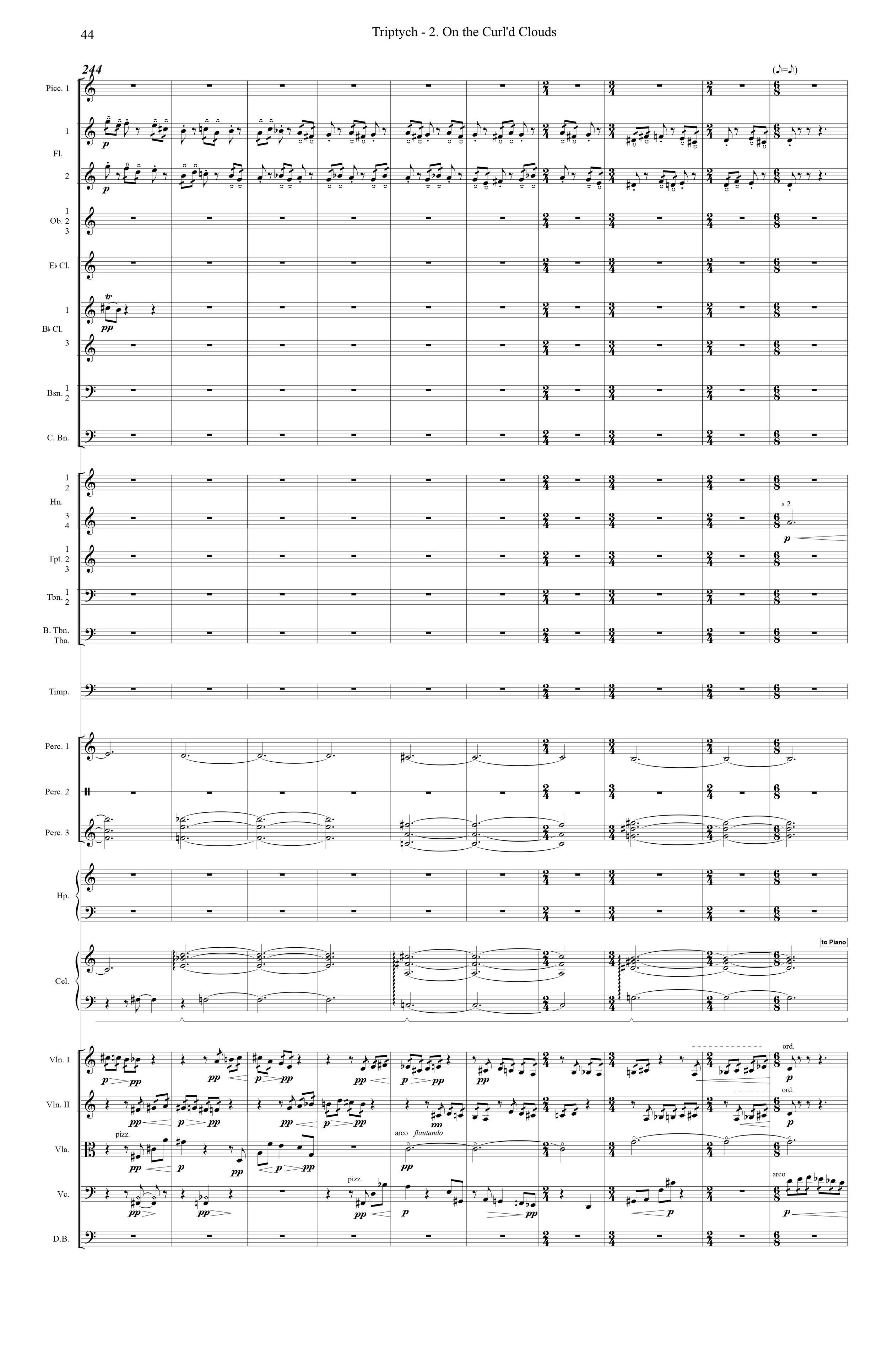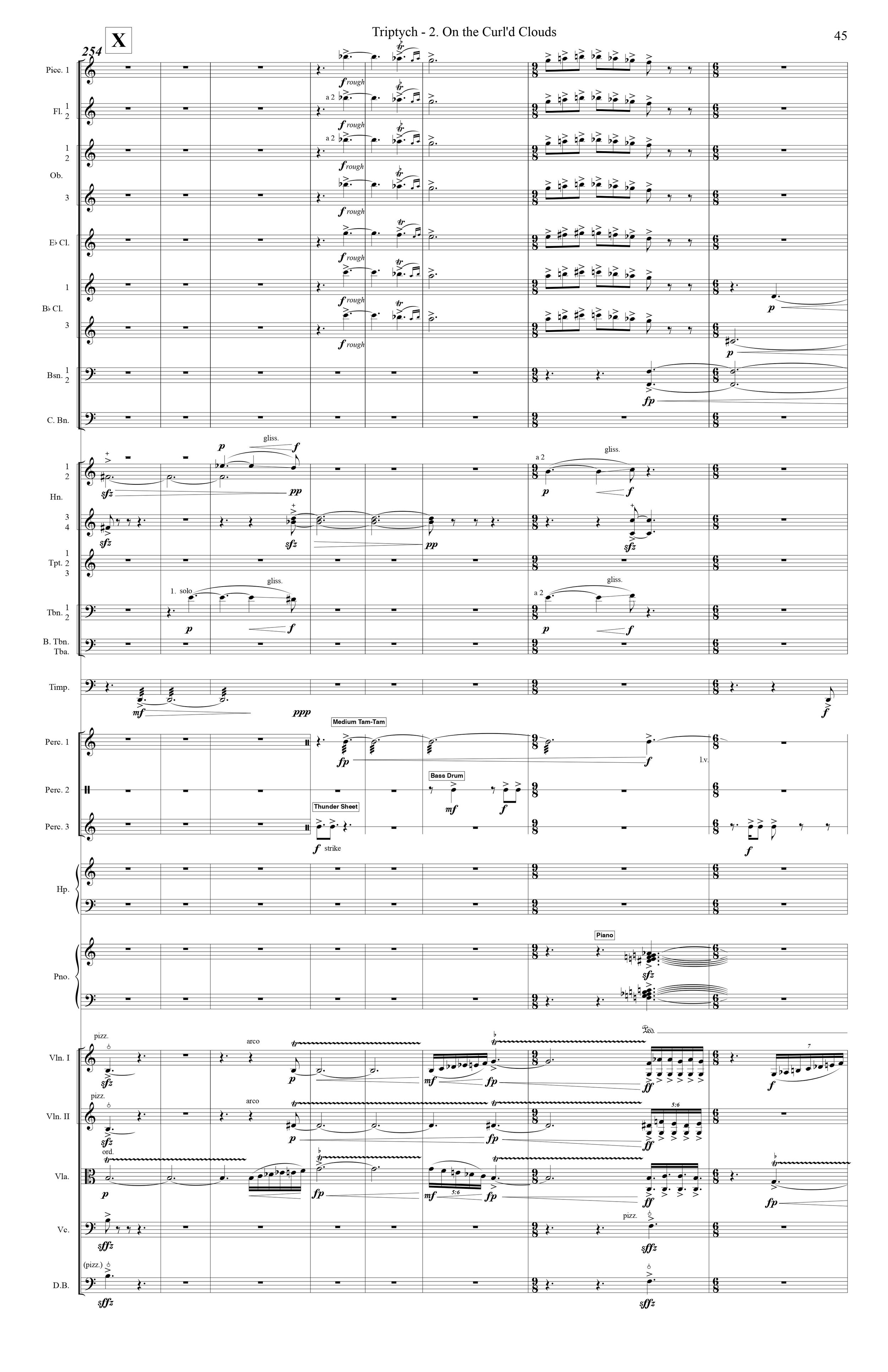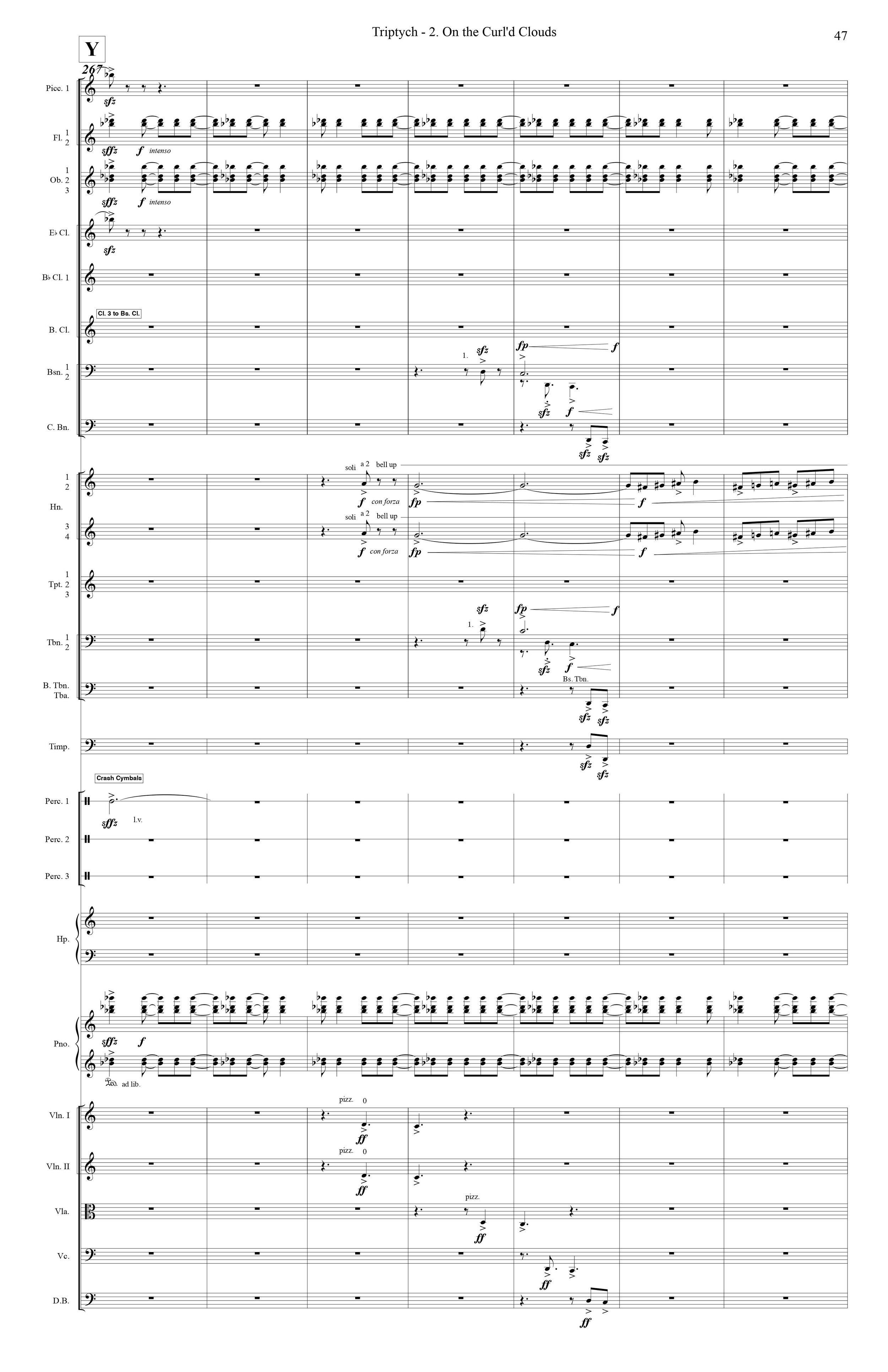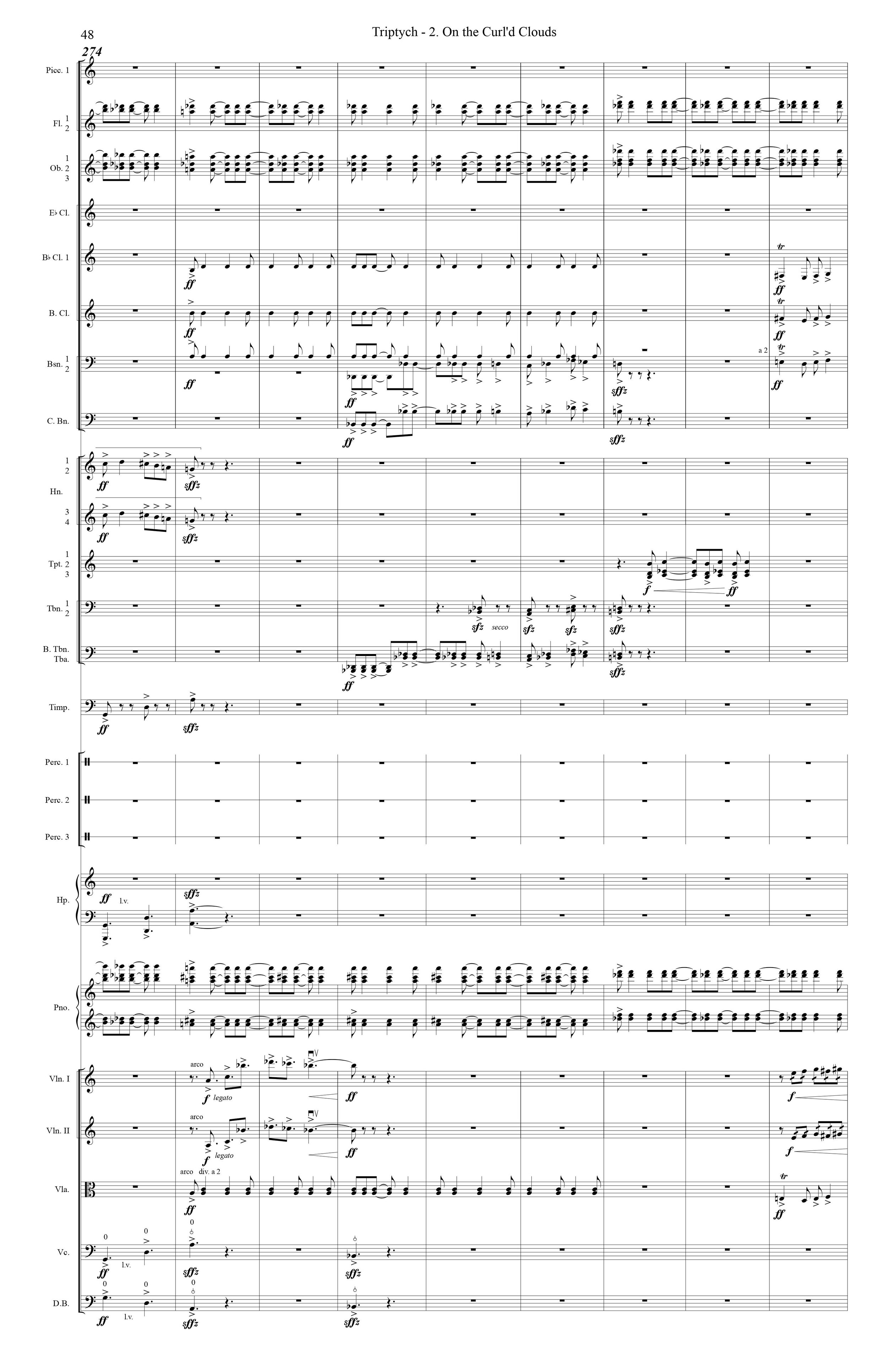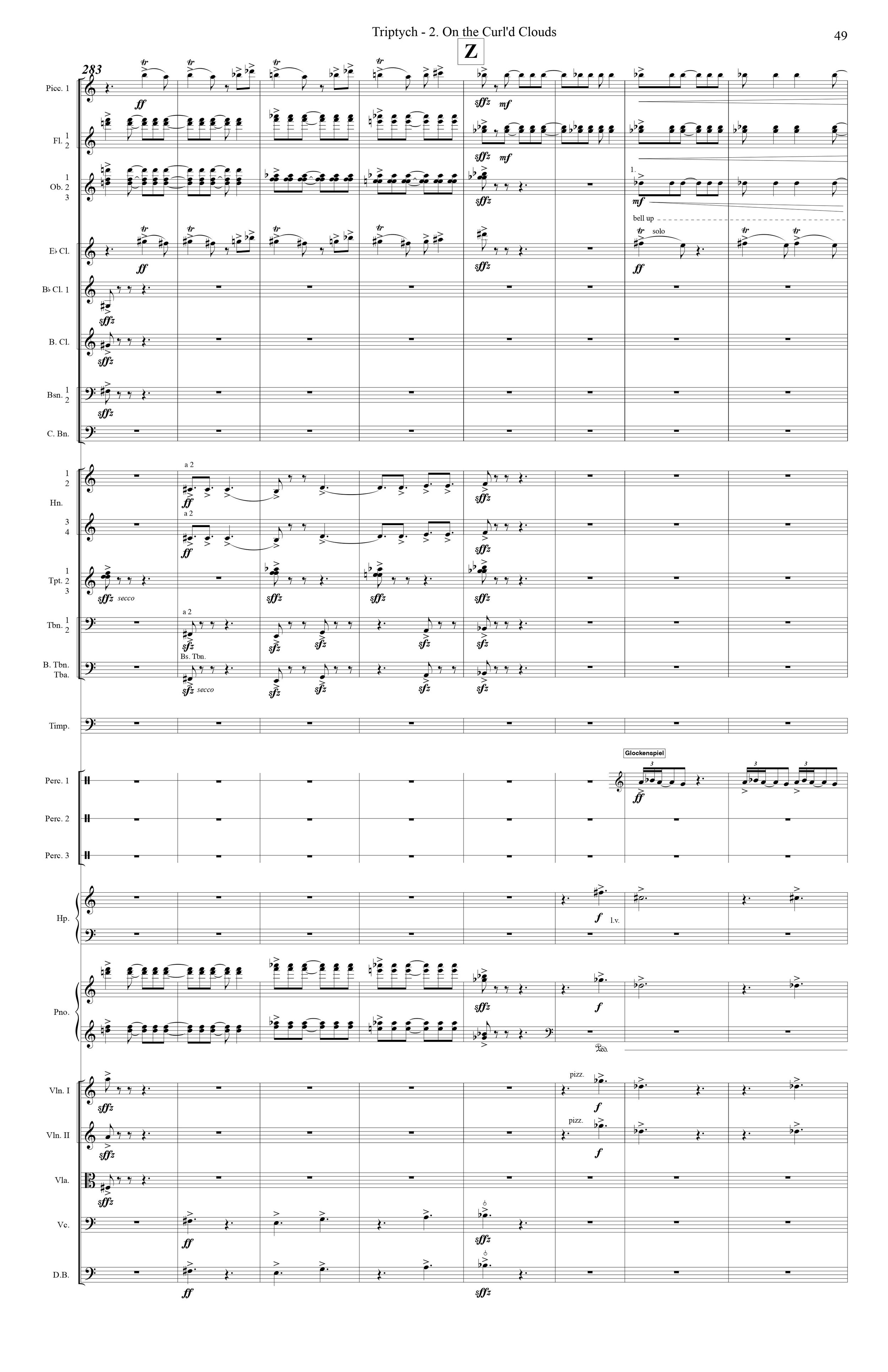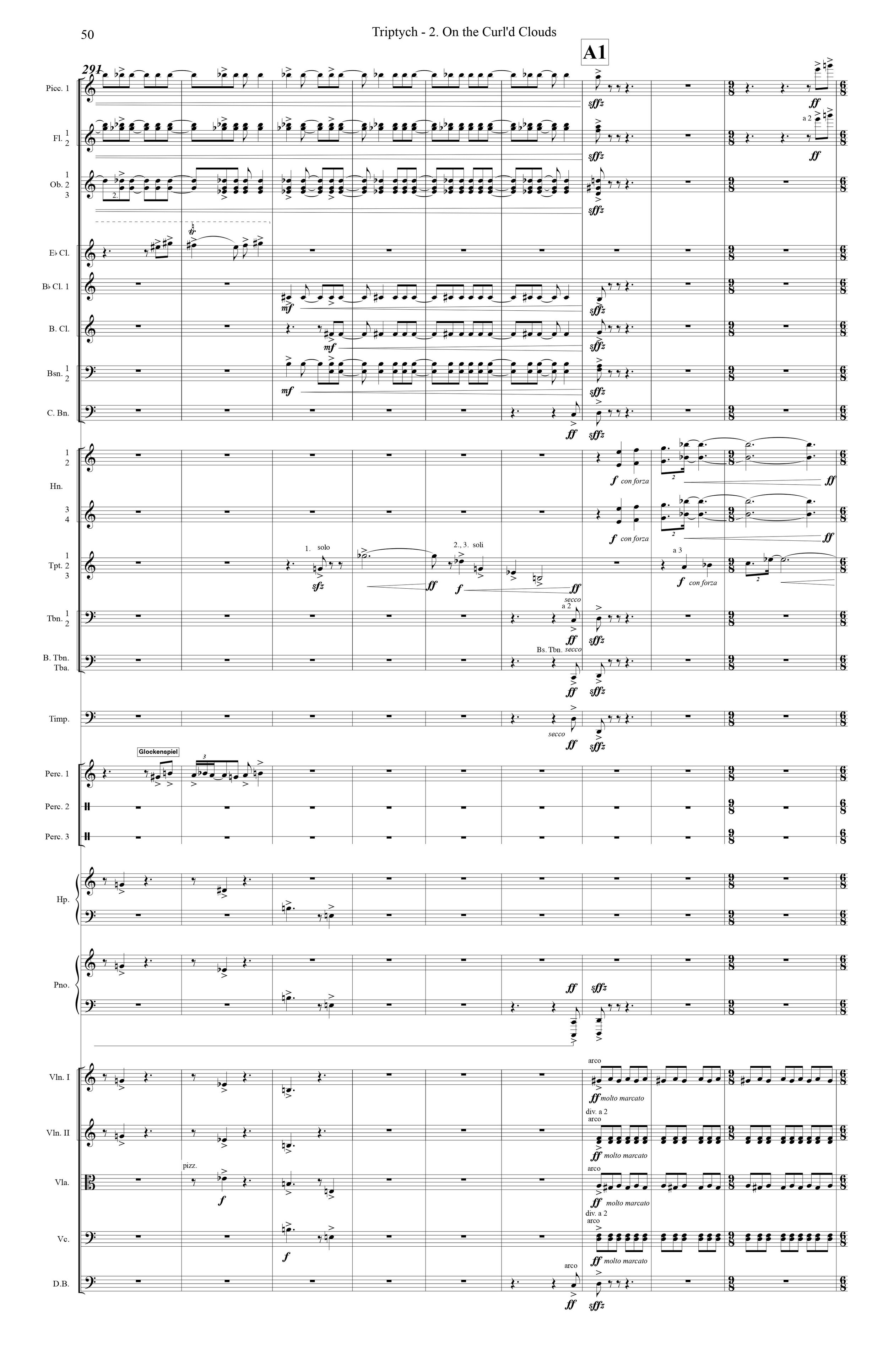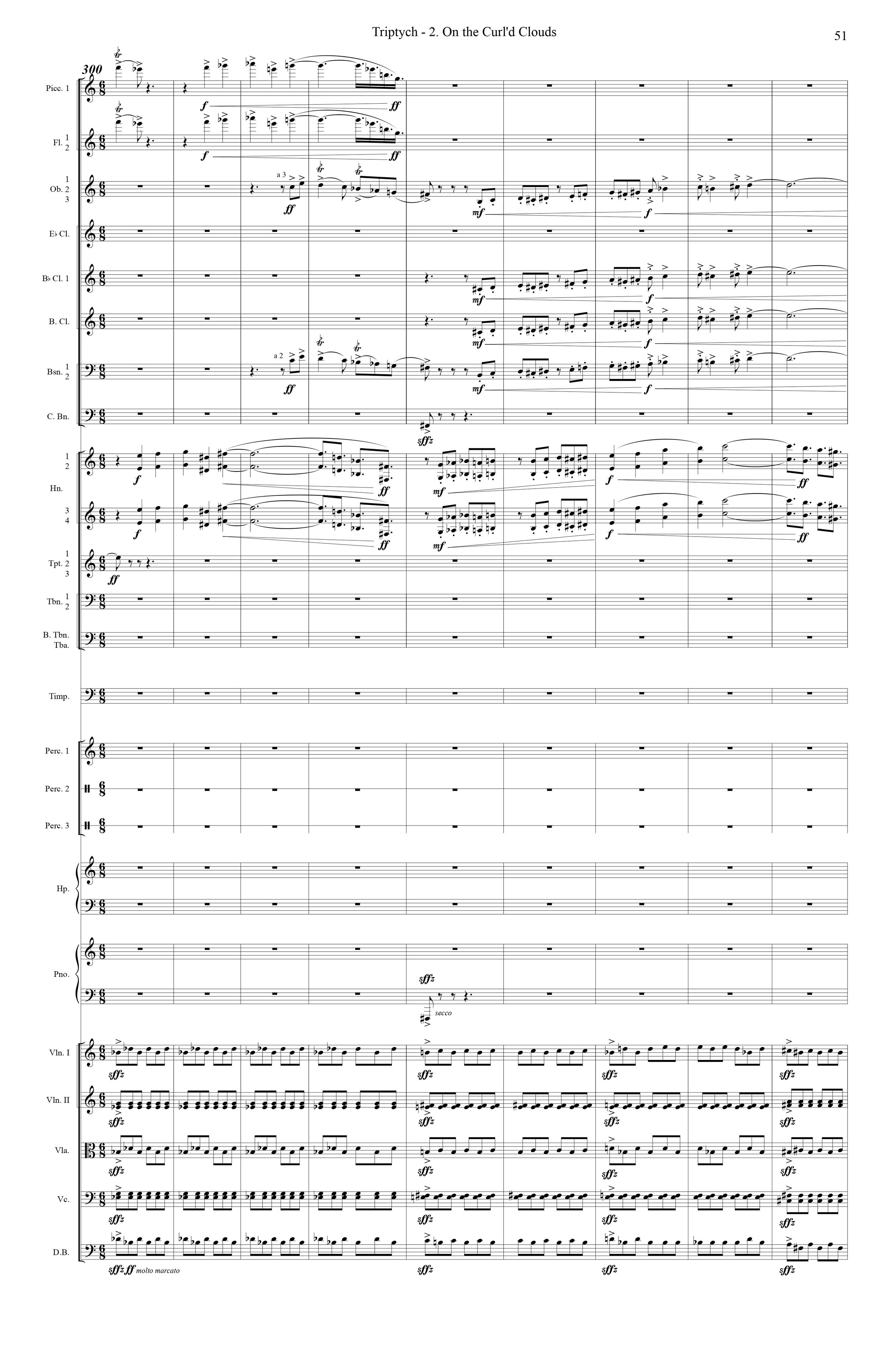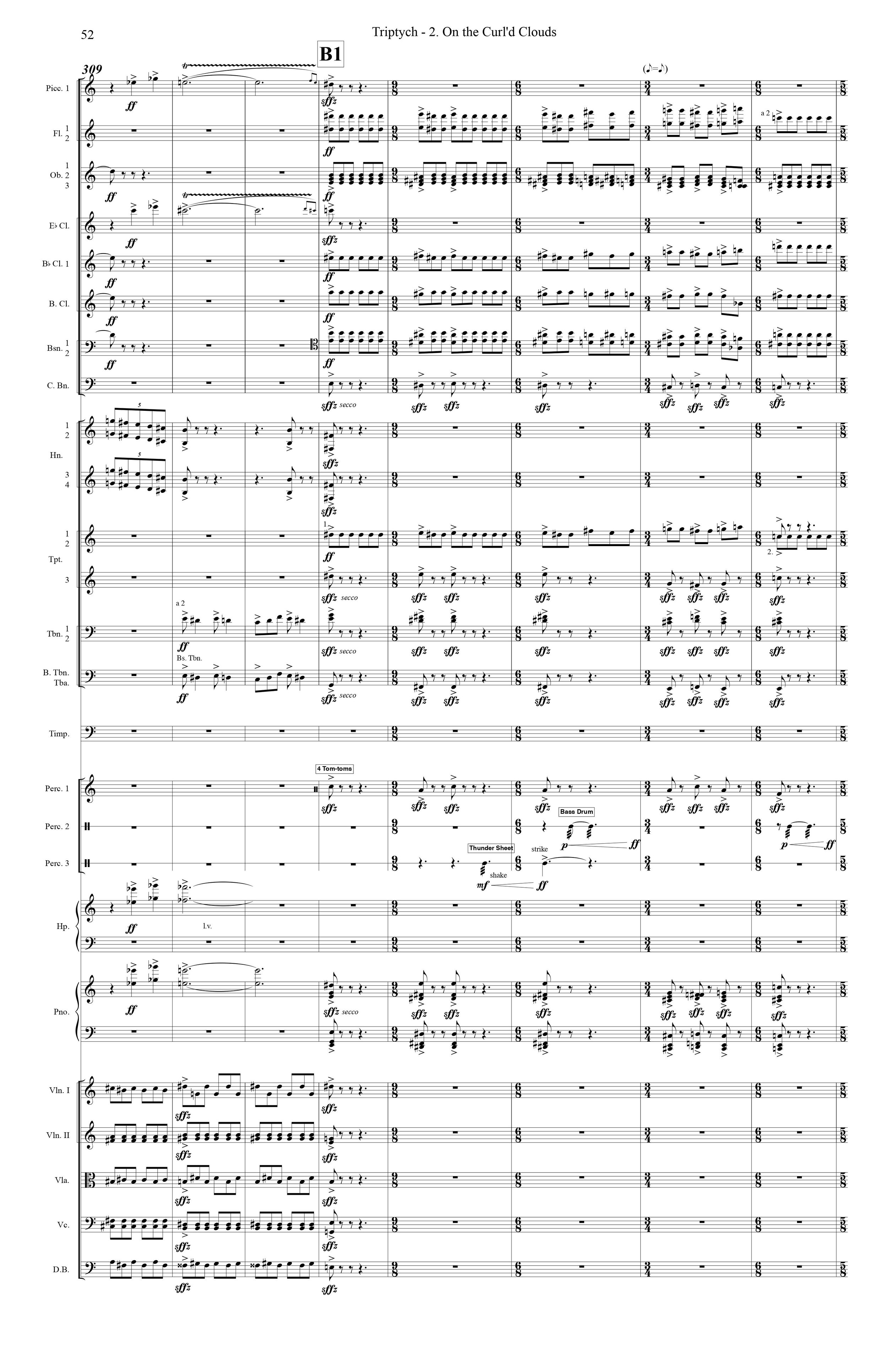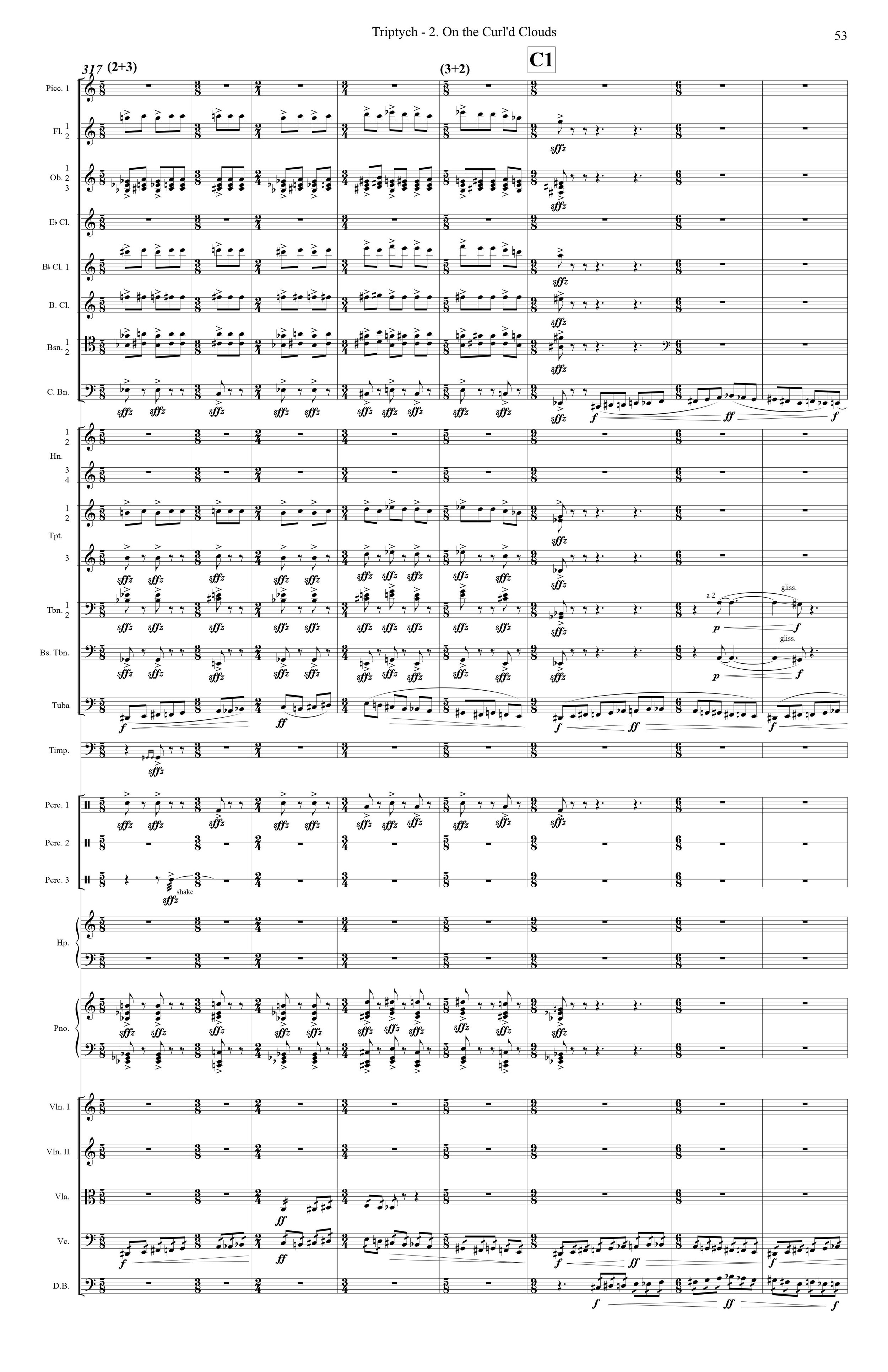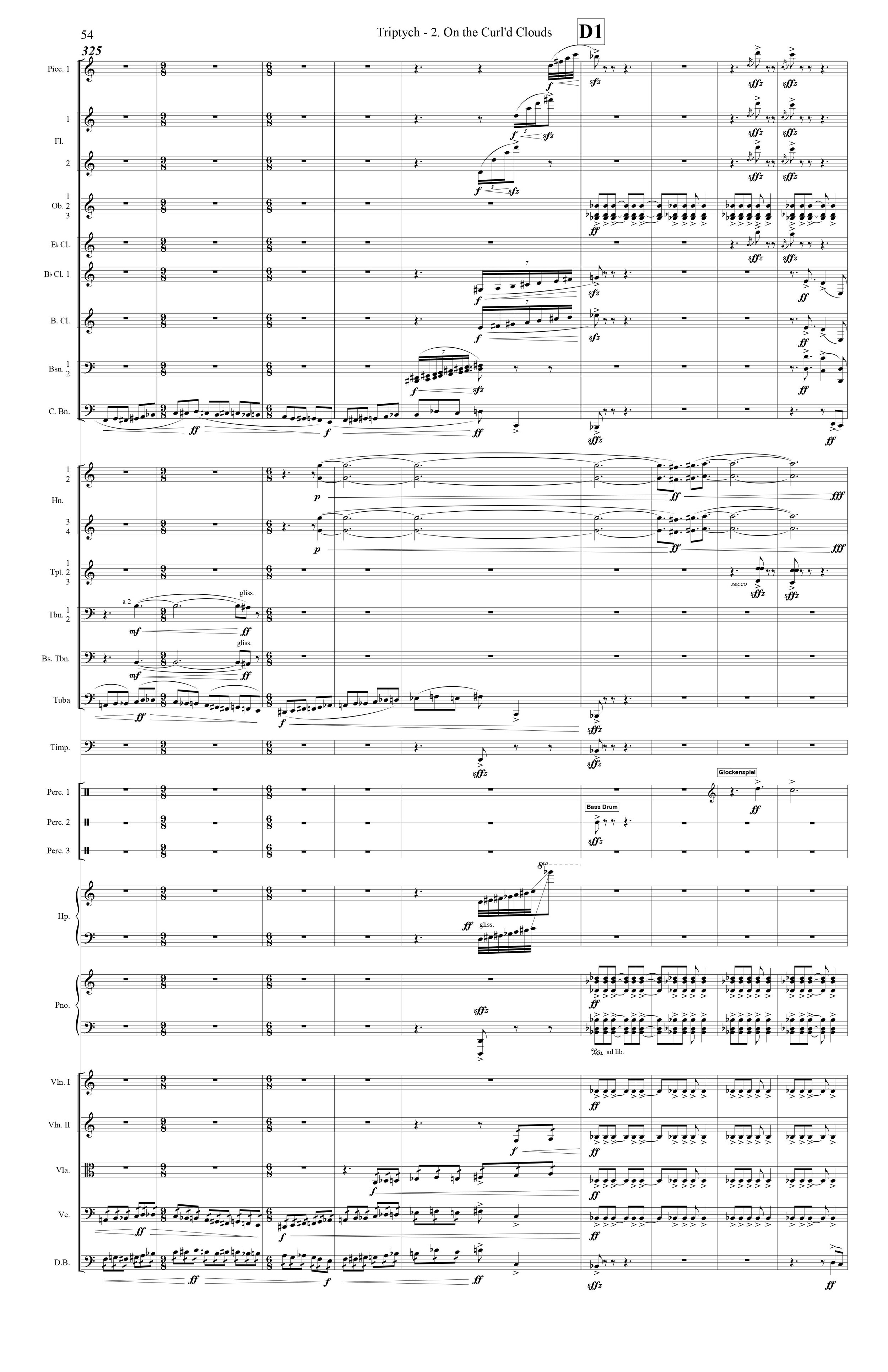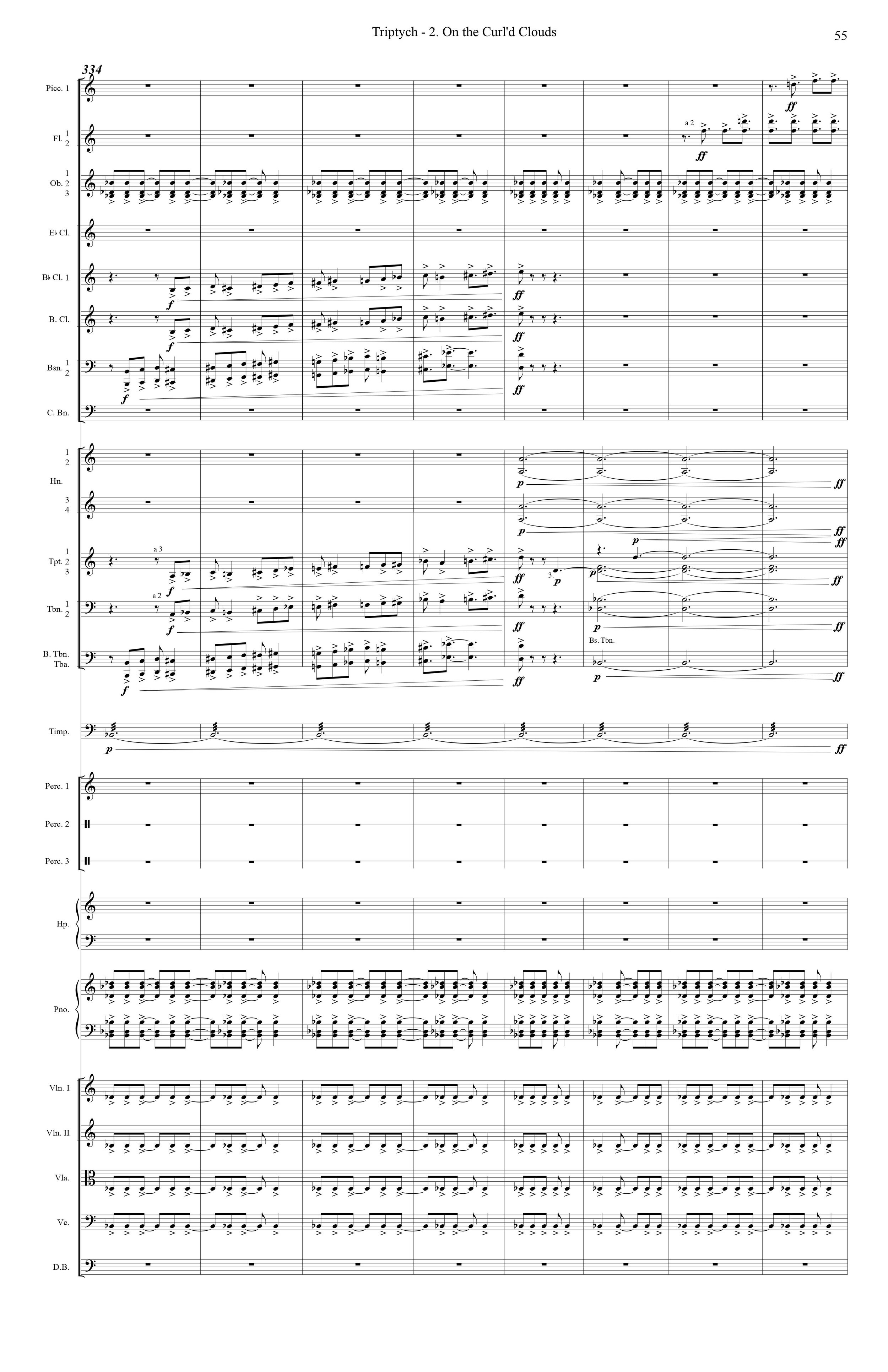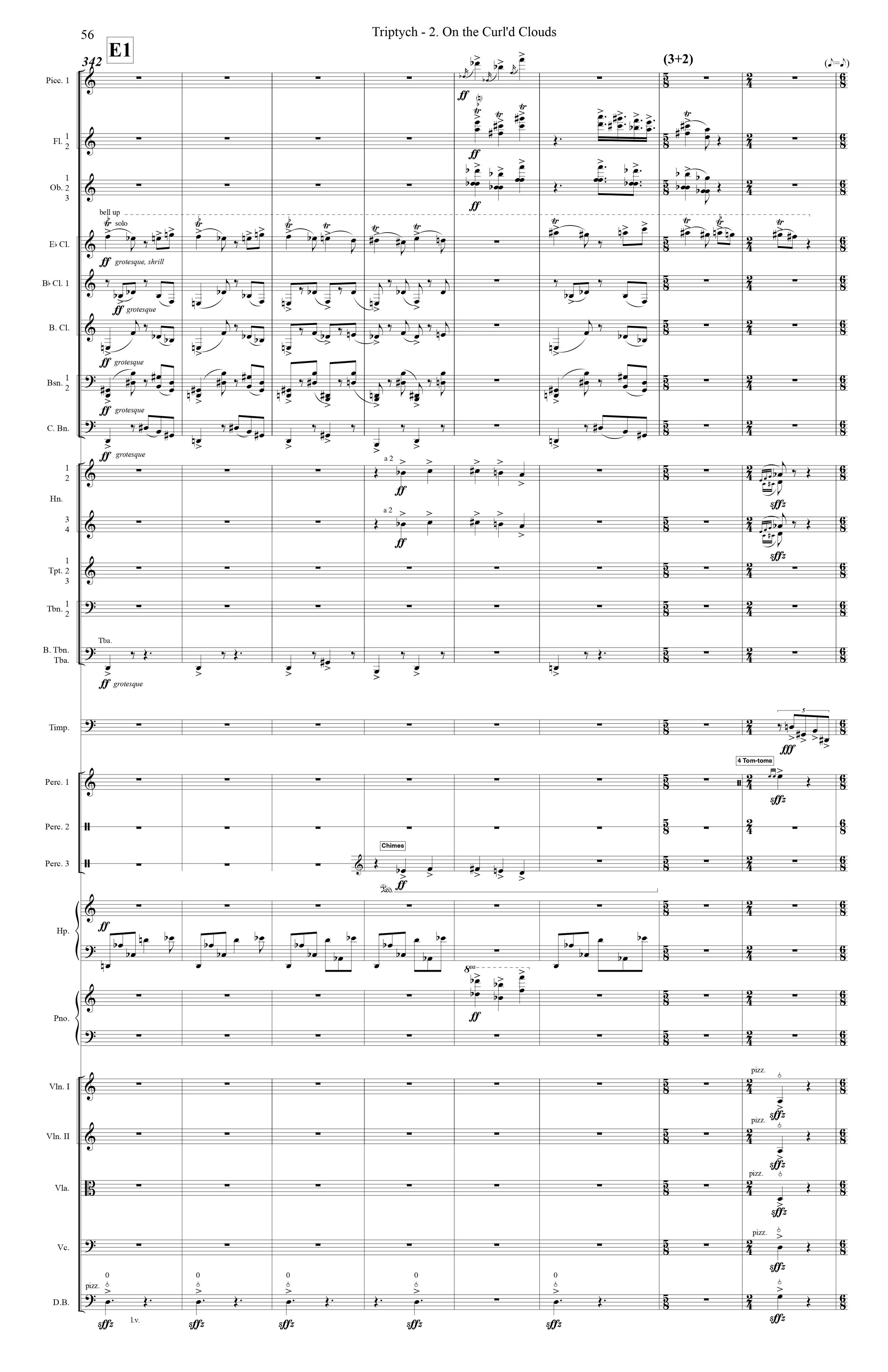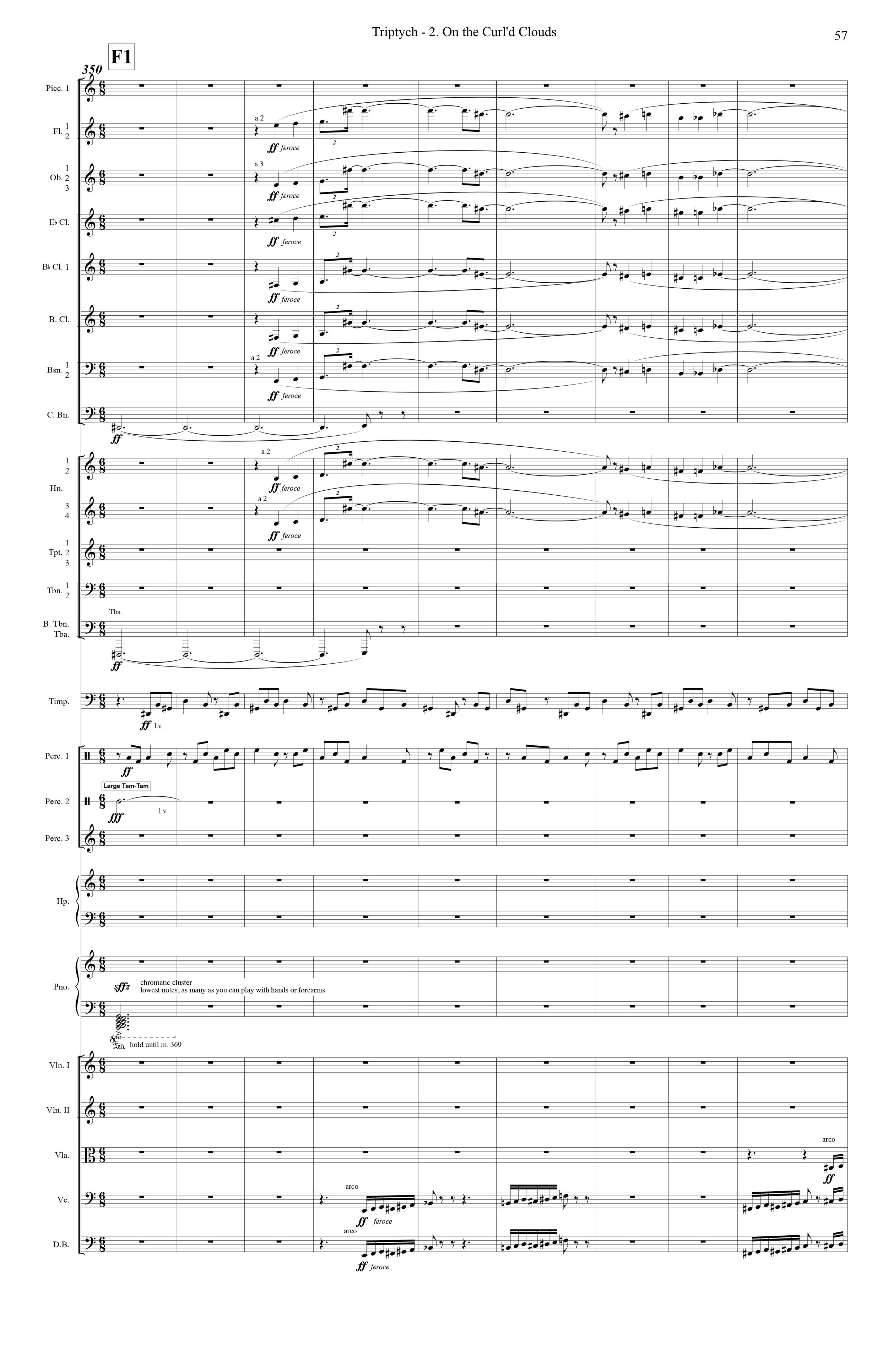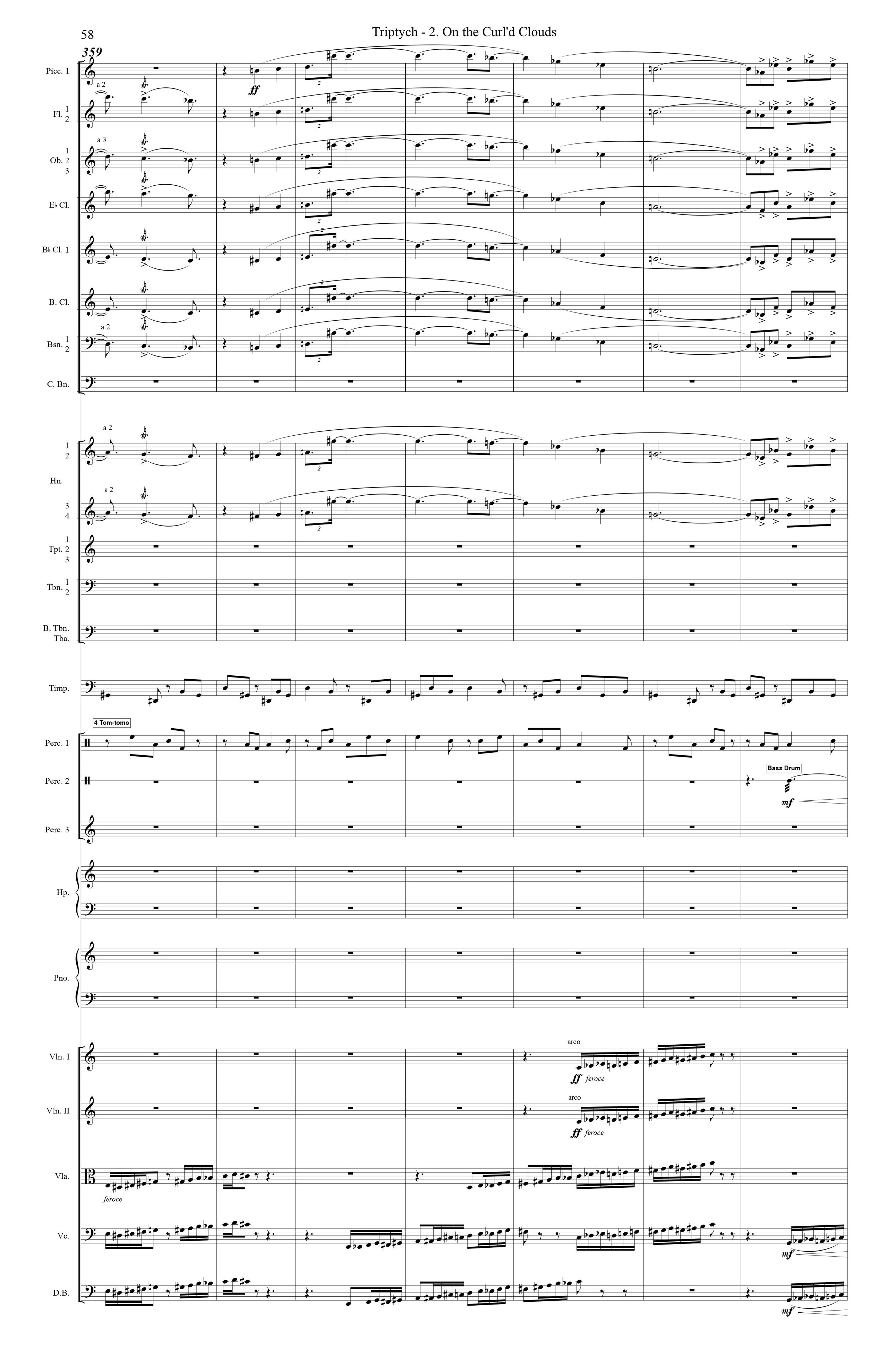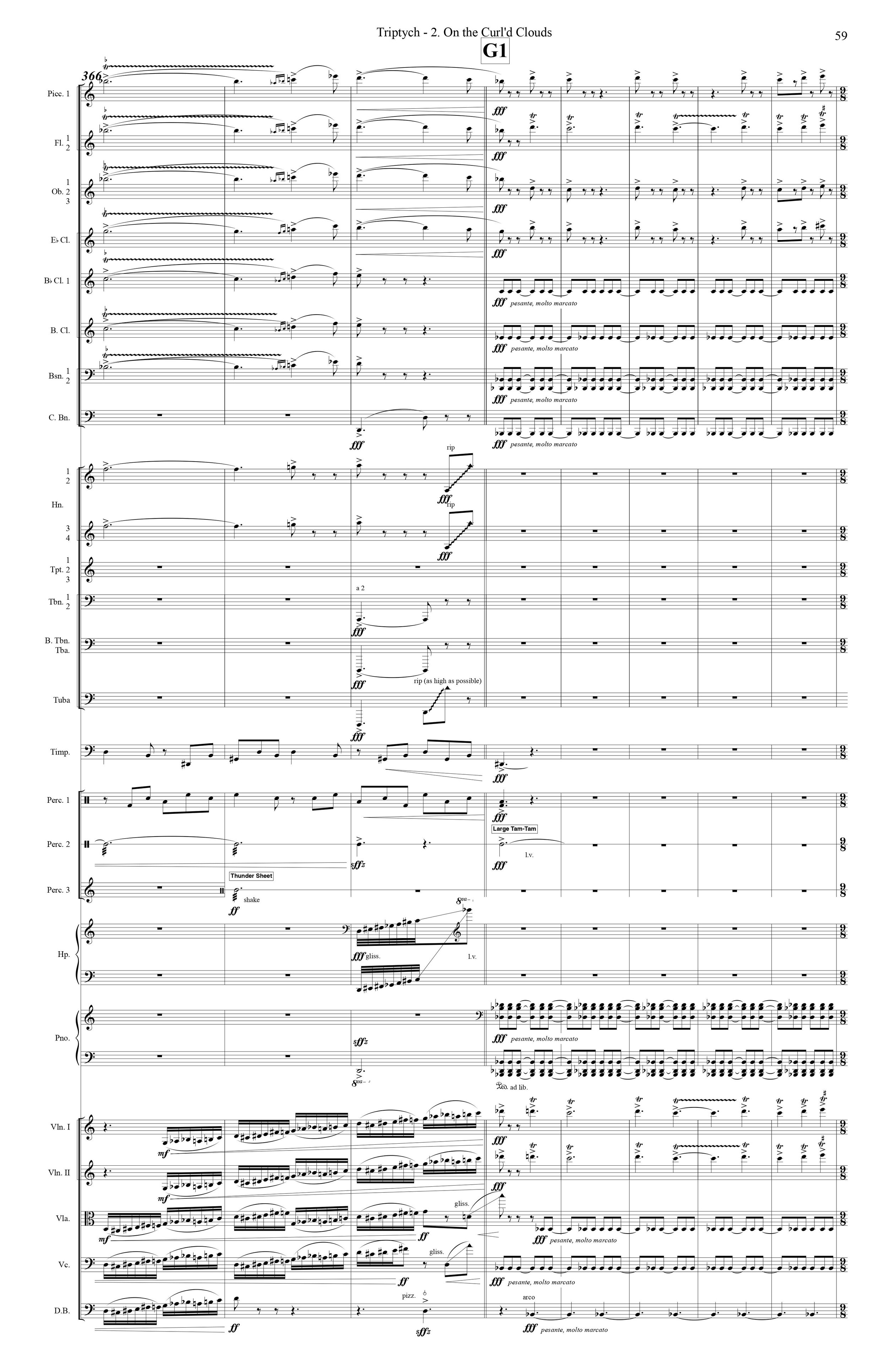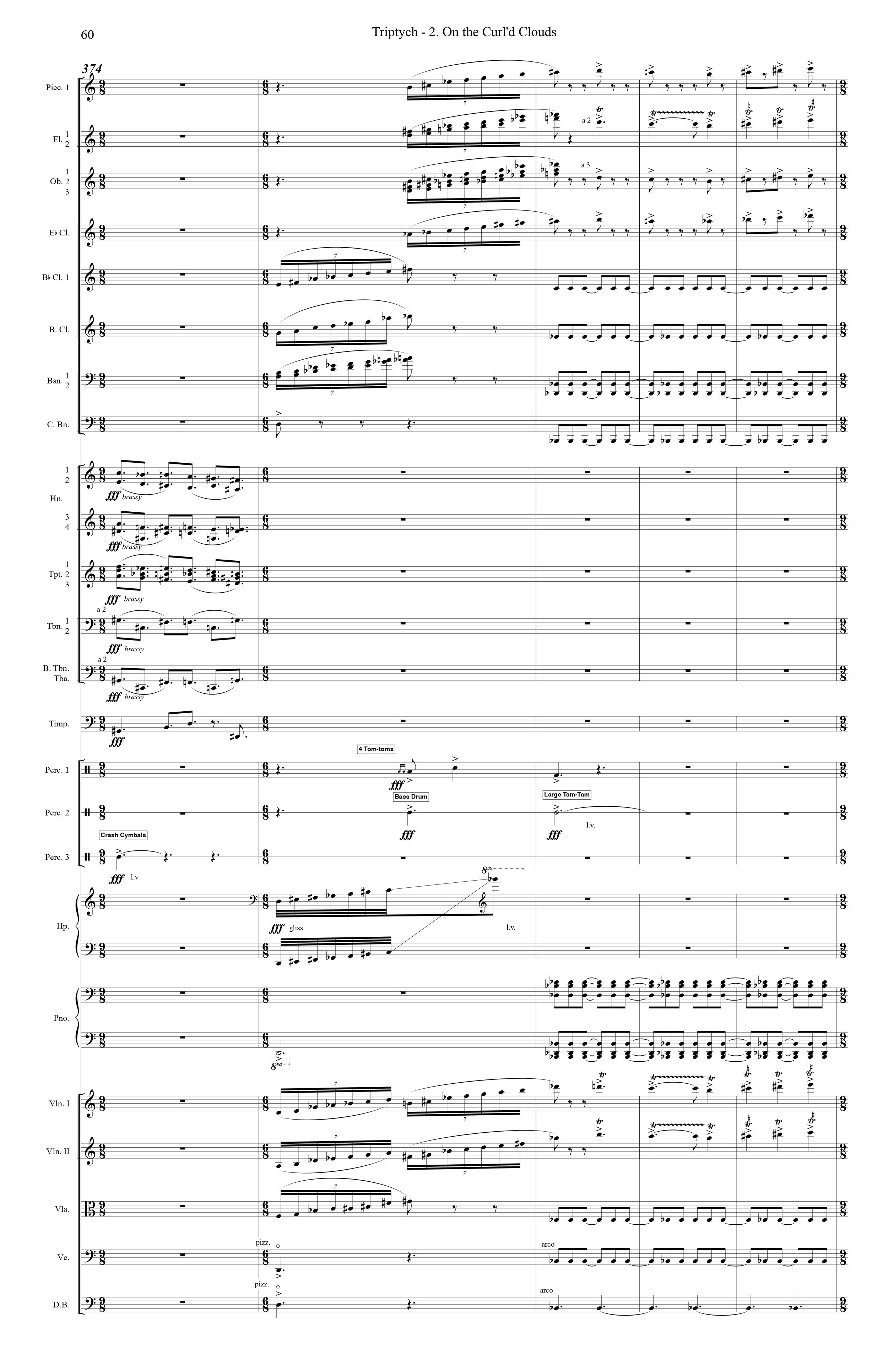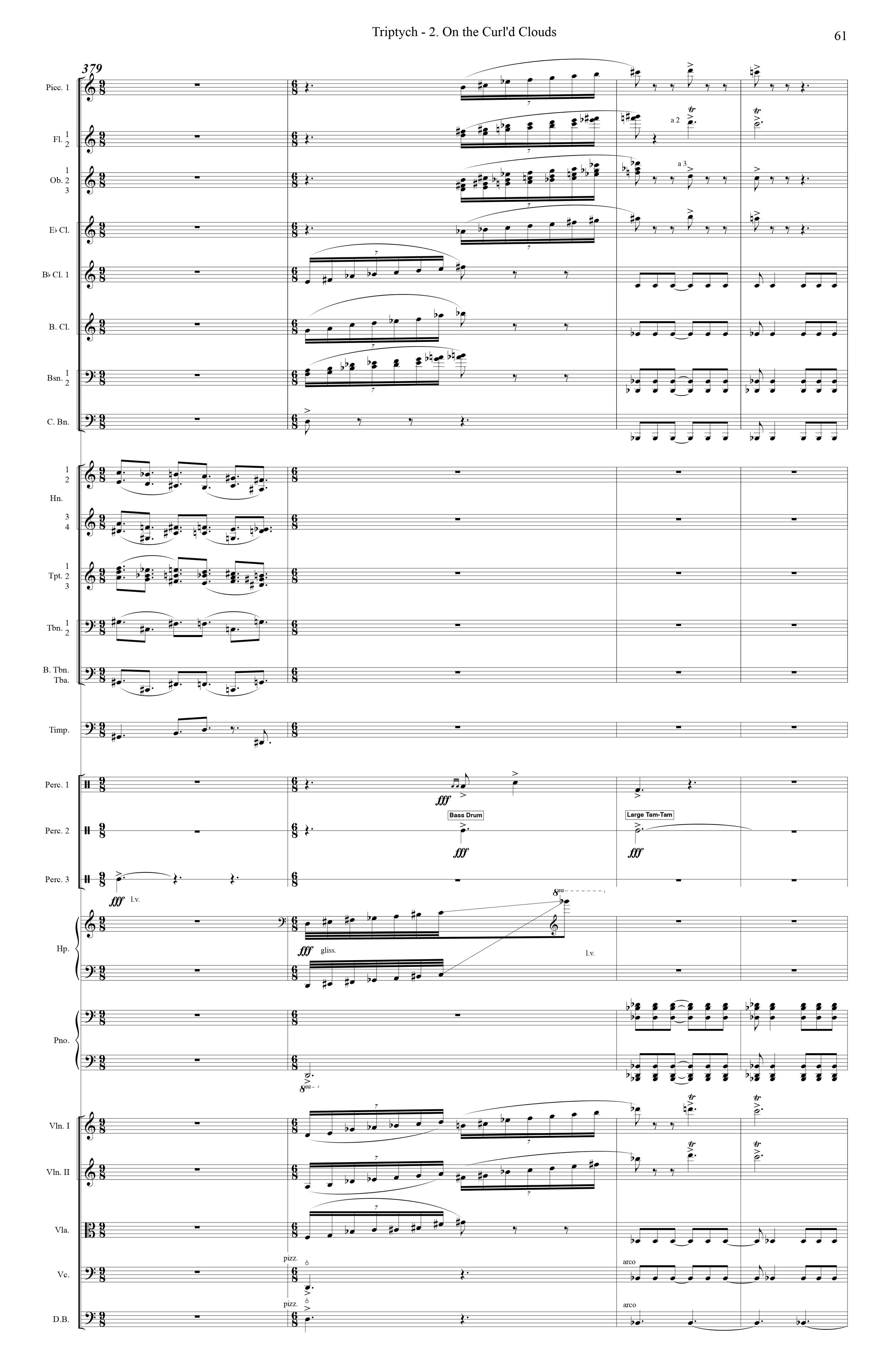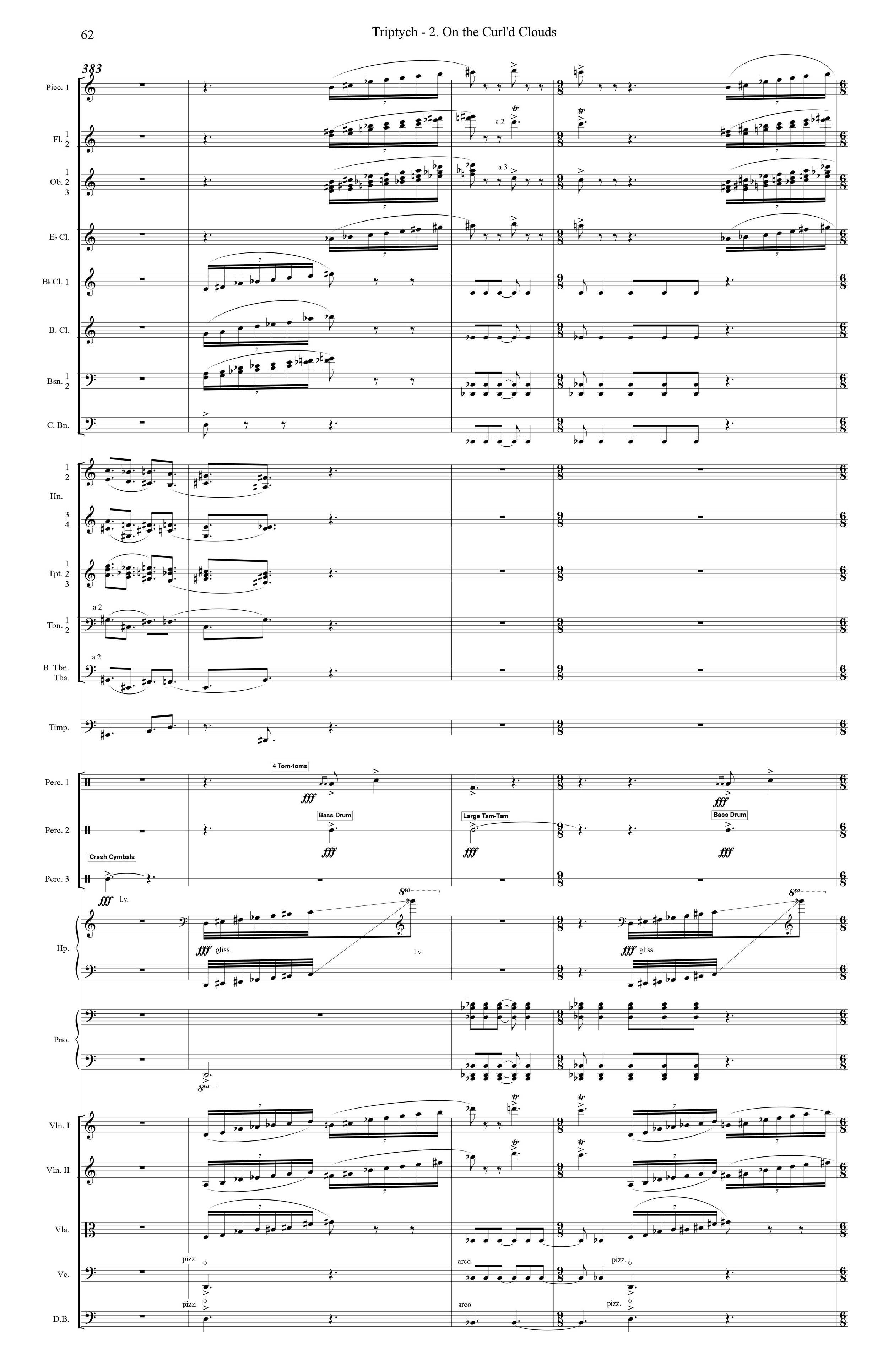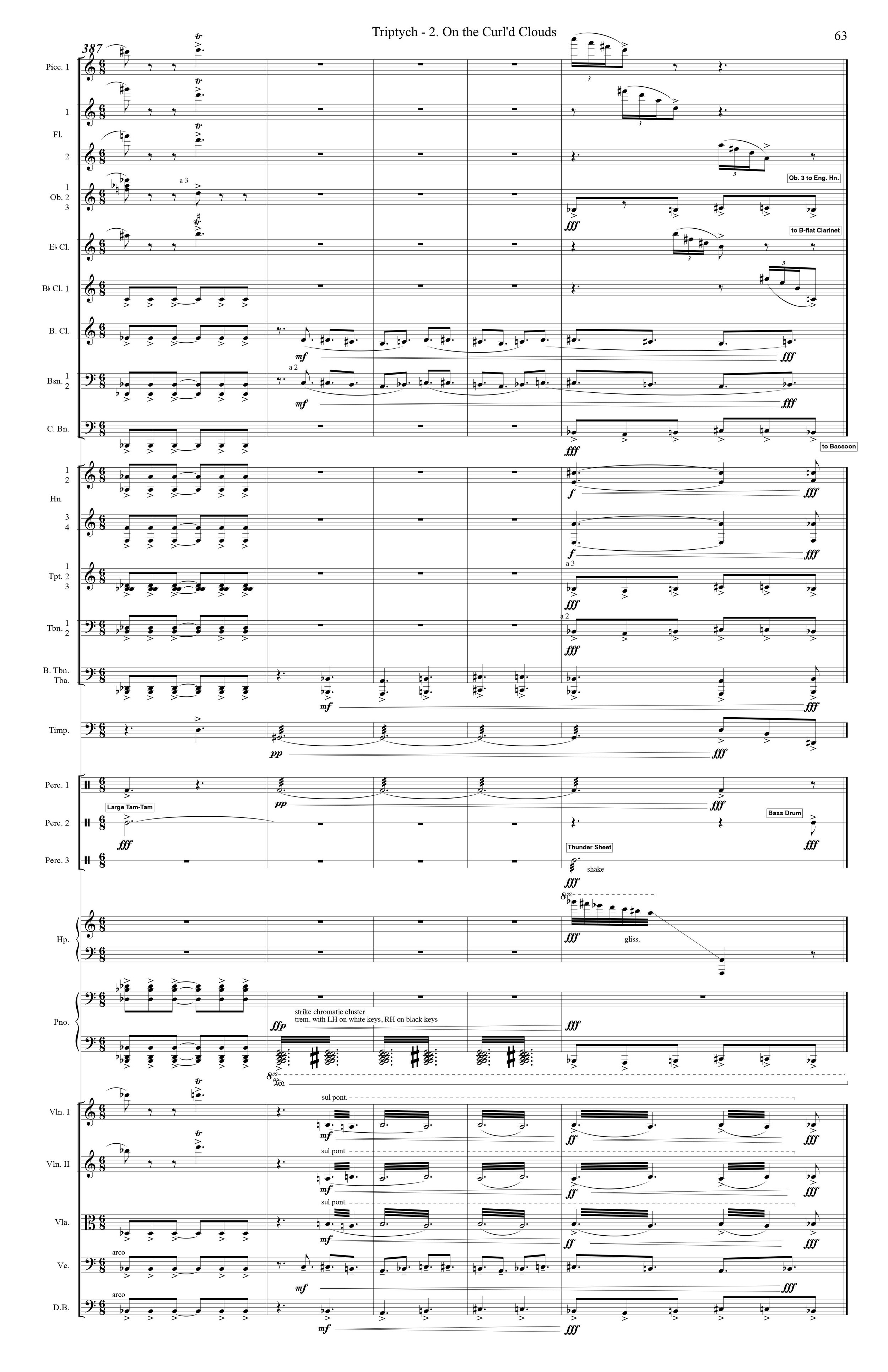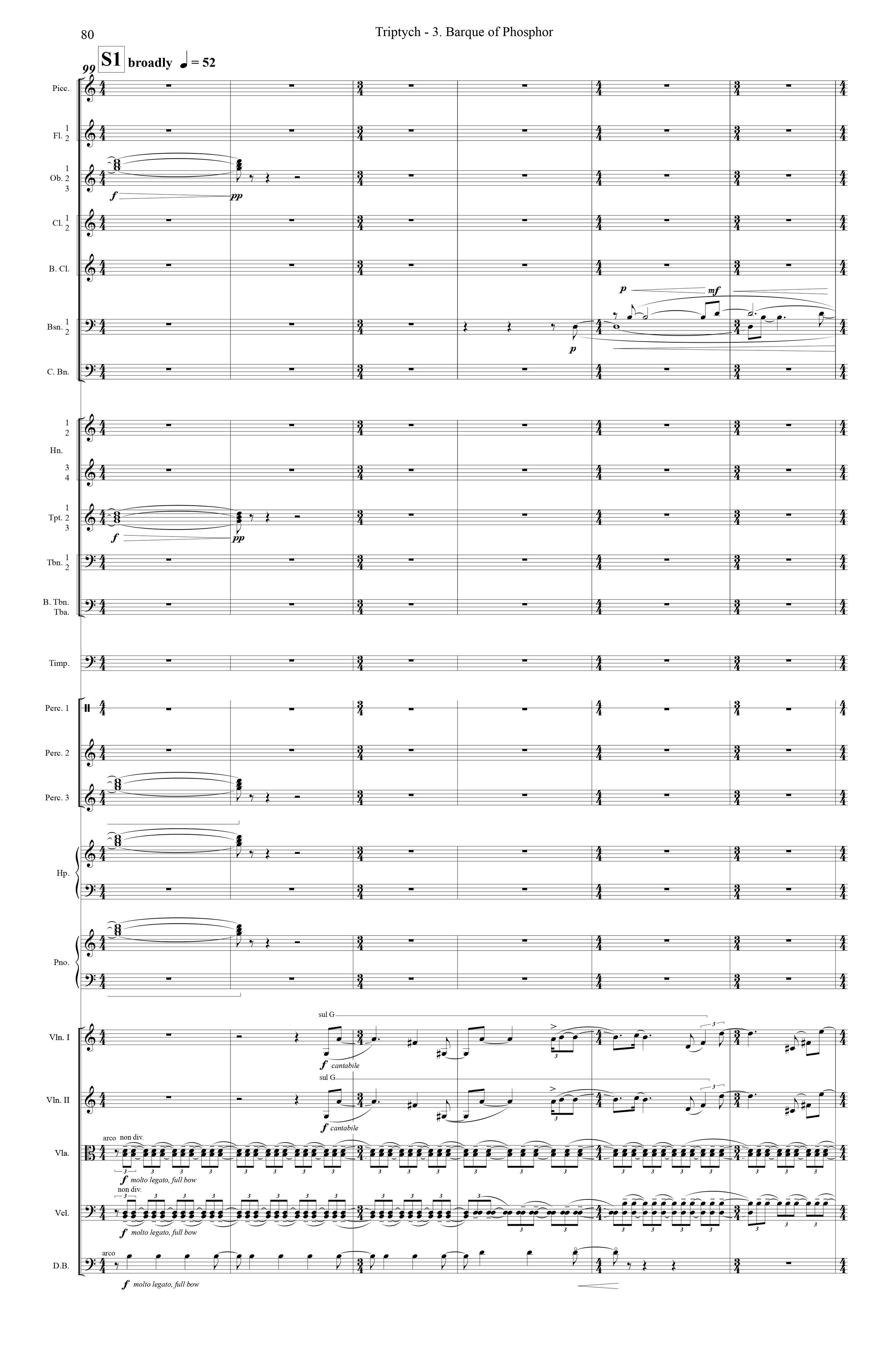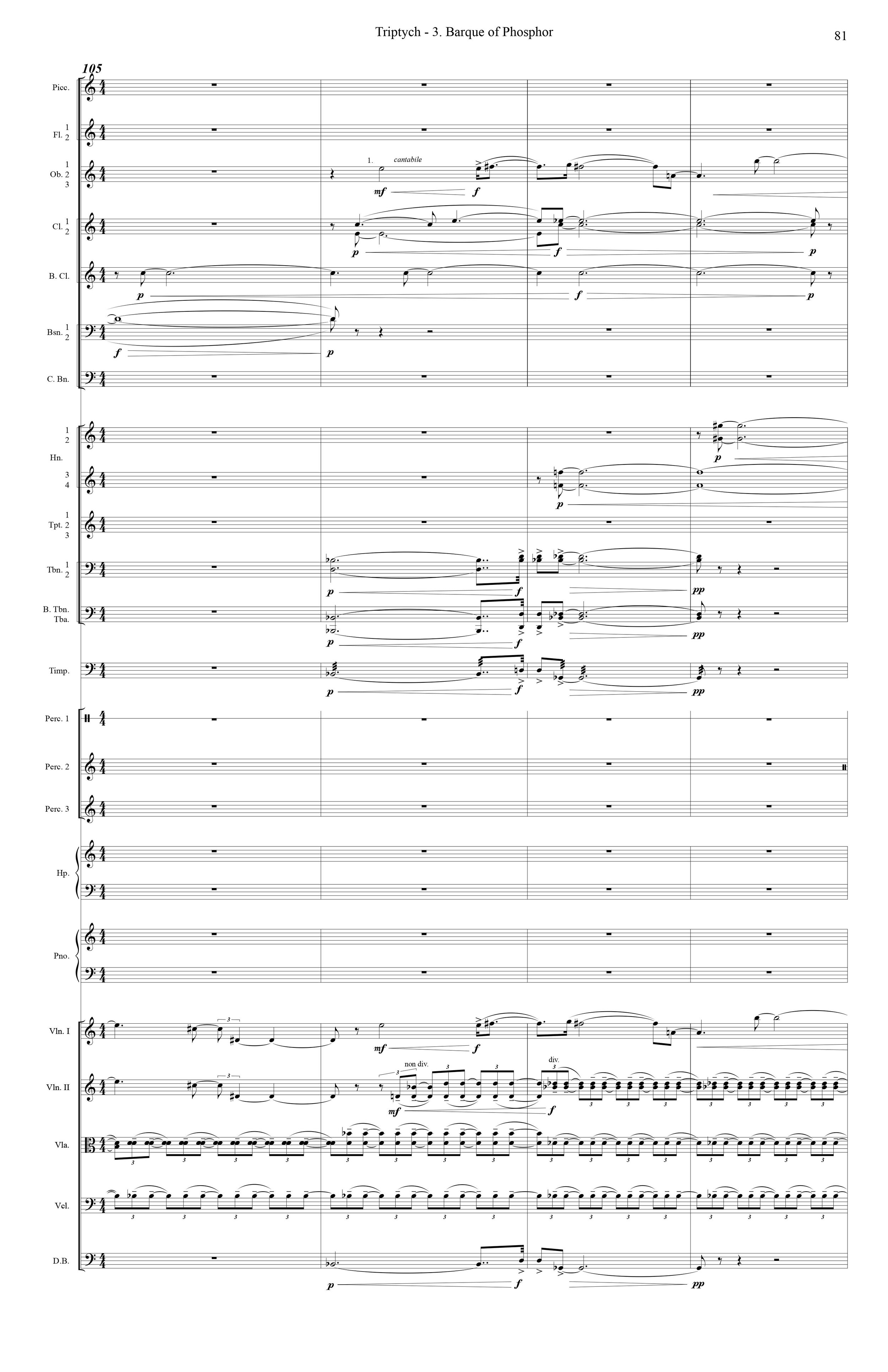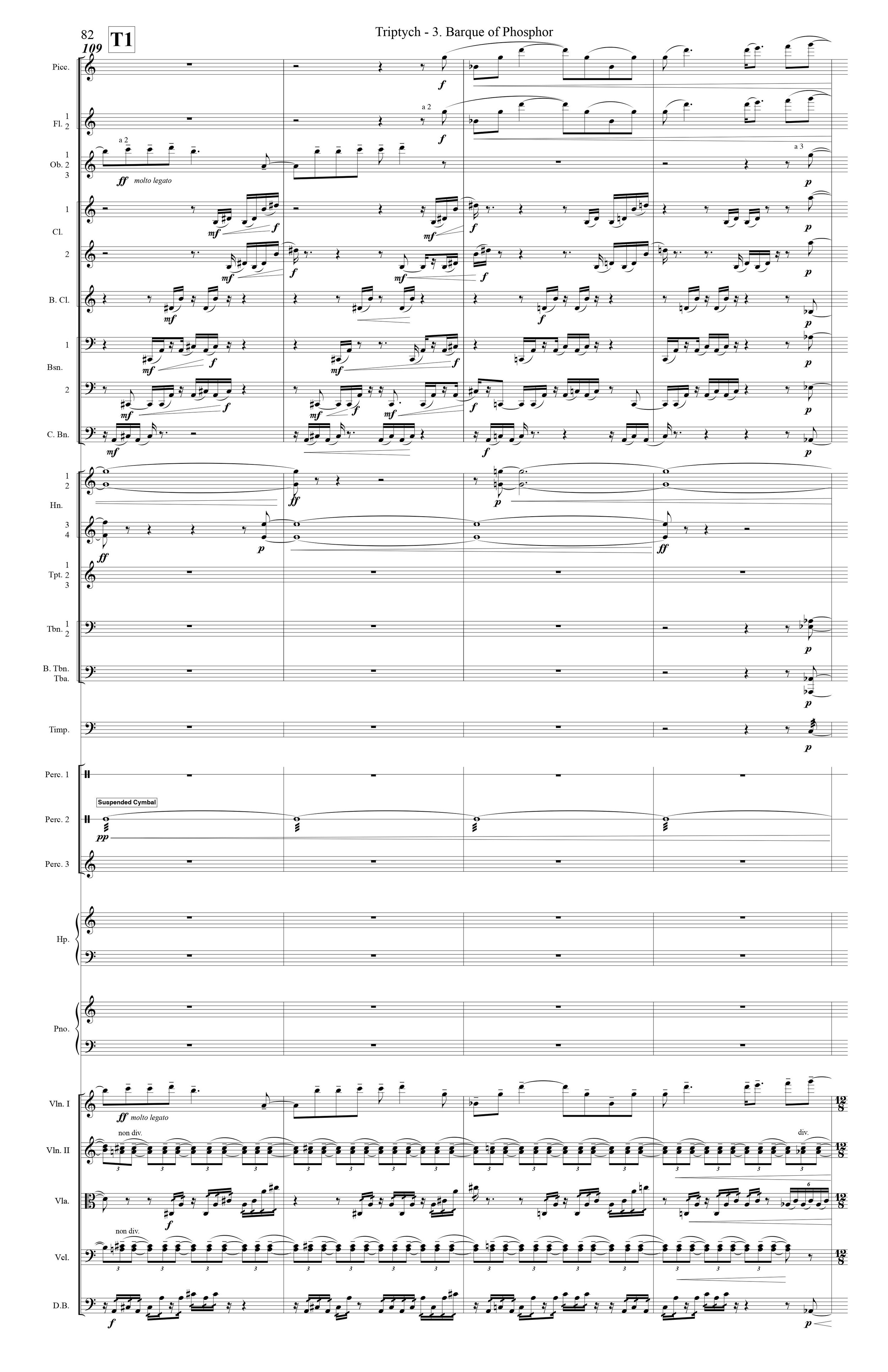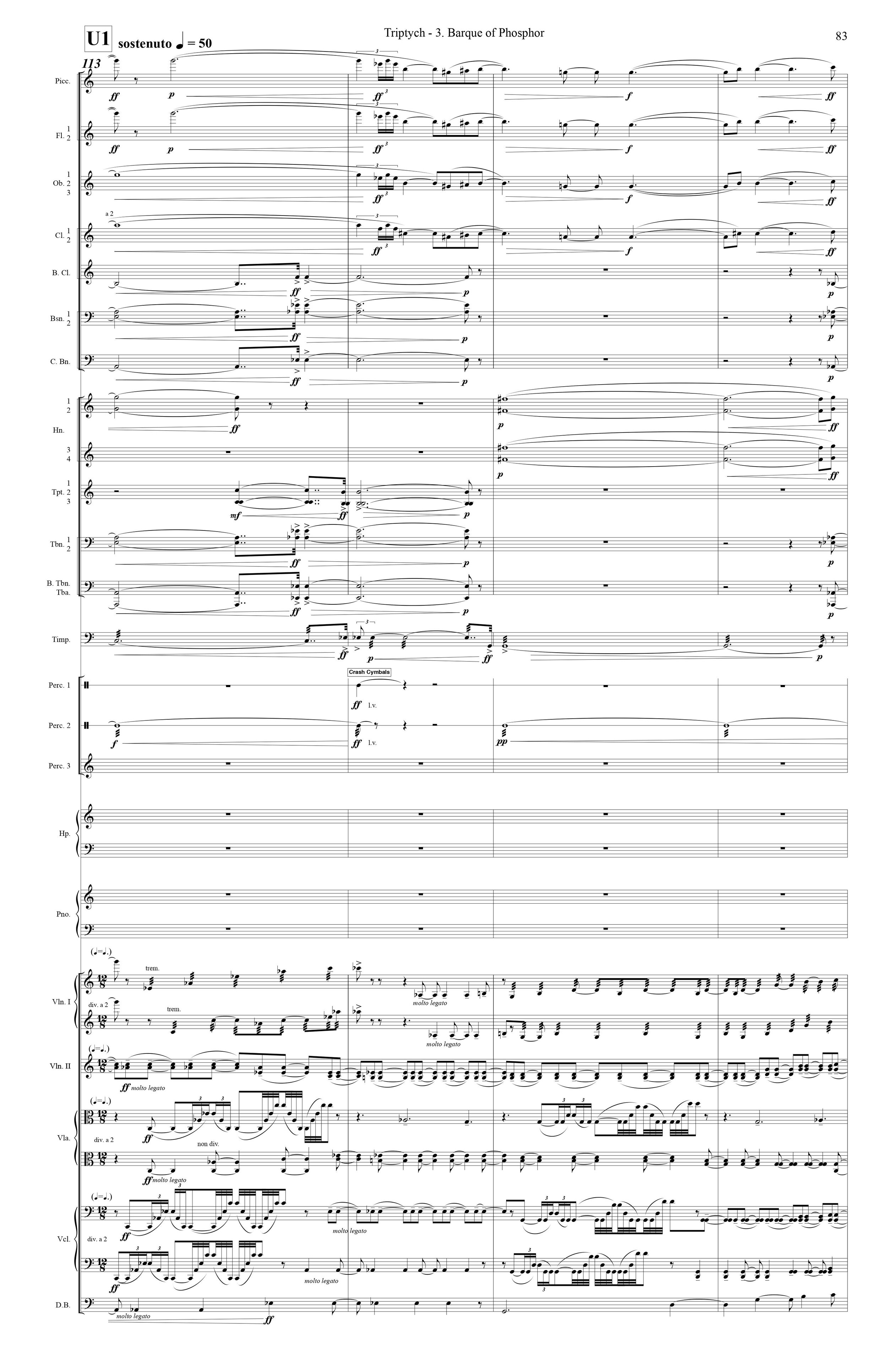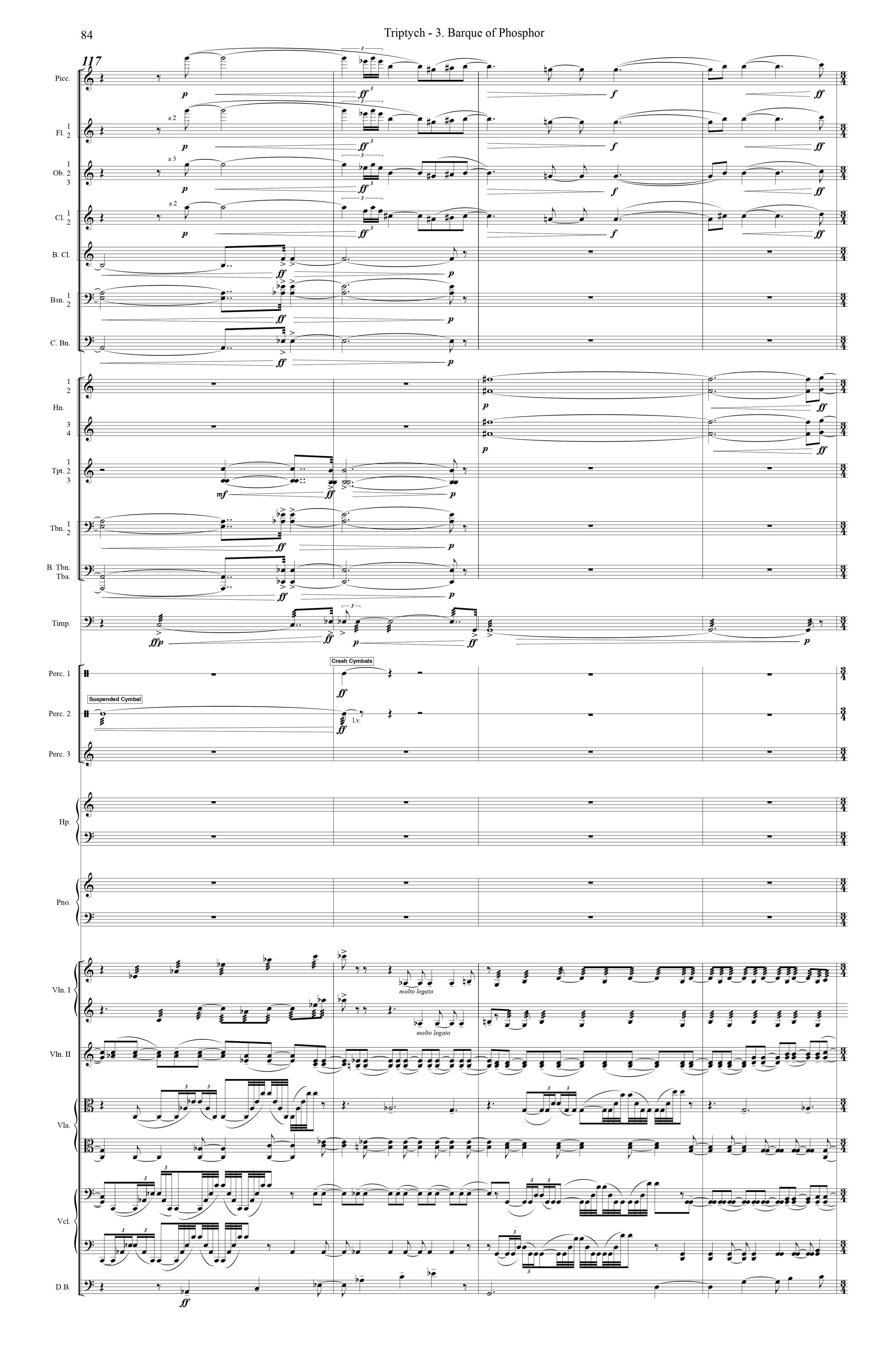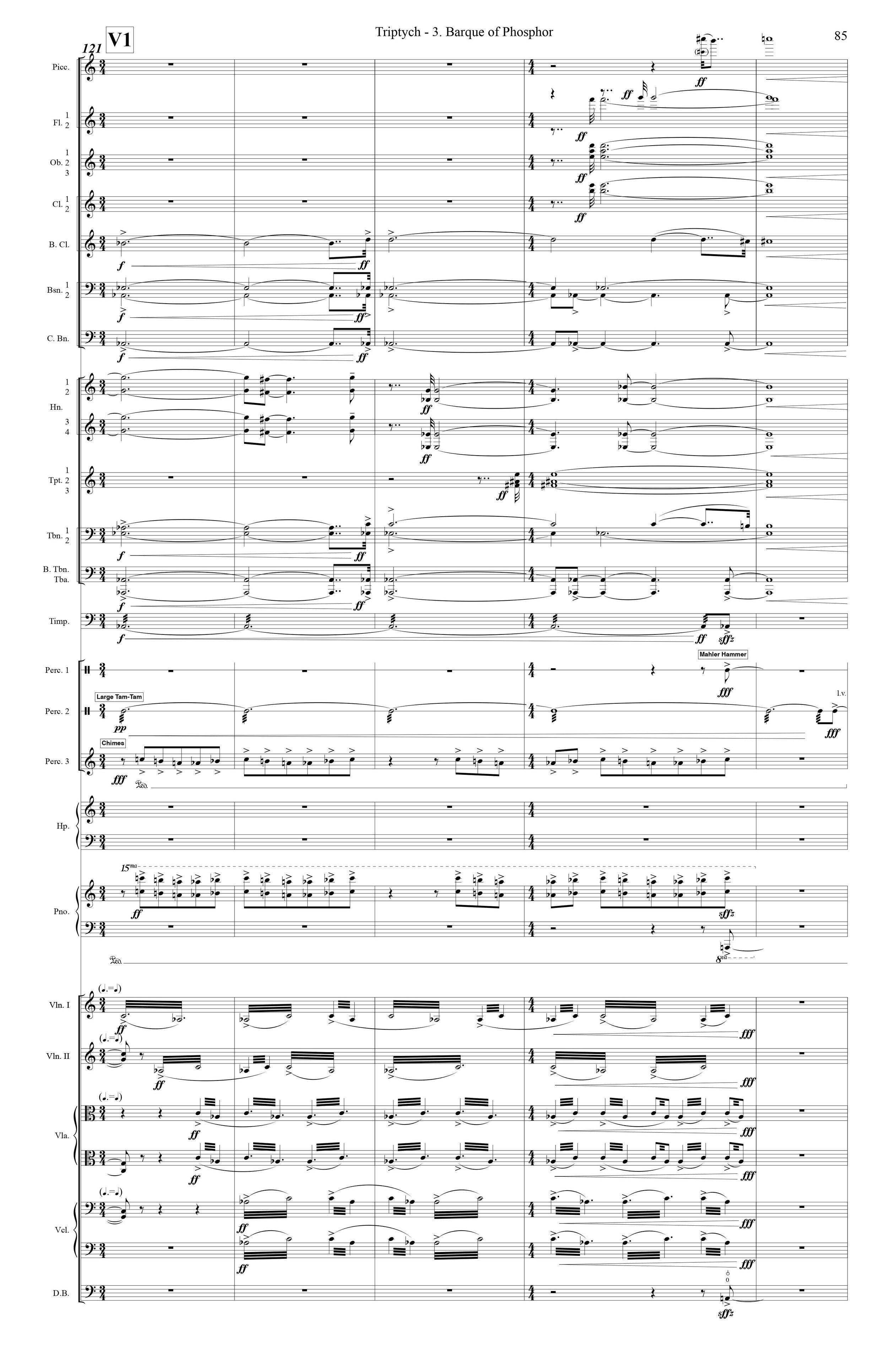Triptych, for orchestra (2017)
Duration: 26:00 minutes
Instrumentation: 3 flutes (2nd and 3rd doubling piccolo), 3 oboes (3rd doubling English Horn), 3 B-flat clarinets (2nd doubling E-flat and 3rd doubling bass), 3 bassoons (3rd doubling contrabassoon), 4 horns, 3 C trumpets, 2 trombones, bass trombone, tuba, timpani, percussion (3 players), harp, piano (doubling celesta), and strings
Premiere: February 23, 2018 by Michael Francis and The Florida Orchestra at Mahaffey Theater, Saint Petersburg, FL
Notes:
Triptych was written for the 50th anniversary season of The Florida Orchestra. I saw this piece as an opportunity to celebrate my hometown orchestra as well as reflect on the environment where I grew up. In thinking about how to approach this, I found three passages of literature that spoke to Florida’s sense of place.
The first movement, Cypress Cathedral, was inspired by a section of Henry David Thoreau’s 1851 lecture, Walking: “When I would recreate myself, I seek the darkest wood, the thickest and most impenetrable and to the citizen, most dismal, swamp. I enter a swamp as a sacred place, a sanctum sanctorum.” This image of a swamp as sanctuary or sacred place resonated with me for a variety of reasons, and it seemed especially fitting since I always thought being surrounded by cypress trees felt like being in a Gothic cathedral, with swooping columns and vaulted ceilings. This movement has a mysterious atmosphere, with gently rising and falling lines, florid melodies for the winds, and an outburst that evokes a giant organ chord.
The second movement, On the Curl’d Clouds, is based on a passage from Shakespeare’s The Tempest: “All hail, great master! Grave sir, hail! I come/To answer thy best pleasure: be’t to fly,/To swim, to dive into the fire, to ride/On the curl’d clouds, to thy strong bidding task/Ariel and all his quality.” Ariel speaks these words to Prospero after creating the titular storm of the play. This movement is based on the image of Ariel, a trickster sprite, conjuring up a massive storm; it begins as a light wisp of a scherzo and gradually builds into a cataclysmic explosion. The entire movement is constructed as a sort of spiral in which familiar music returns more compressed and more intense each time, each rotation of the spiral shorter than the last.
The last movement, Barque of Phosphor, takes its title from the first line of Wallace Stevens’ poem Fabliau of Florida. This poem combines imagery that could come straight out of a postcard beach scene with whimsical and profound images, like the “barque of phosphor” – the moon reimagined as a luminescent ship sailing into the night sky. My music loosely follows the contemplative mood and imagery of the poem, beginning with a strange, high melody representing the moon. While in Stevens’ poem the moon is rising, I imagined that the viewer might in fact be sinking. The melody returns several times throughout the movement, each time accompanied by lower harmonies as the perspective sinks lower. After an expansive development, the piece comes to an end, submerged and swallowed up by the never-ending surf.
